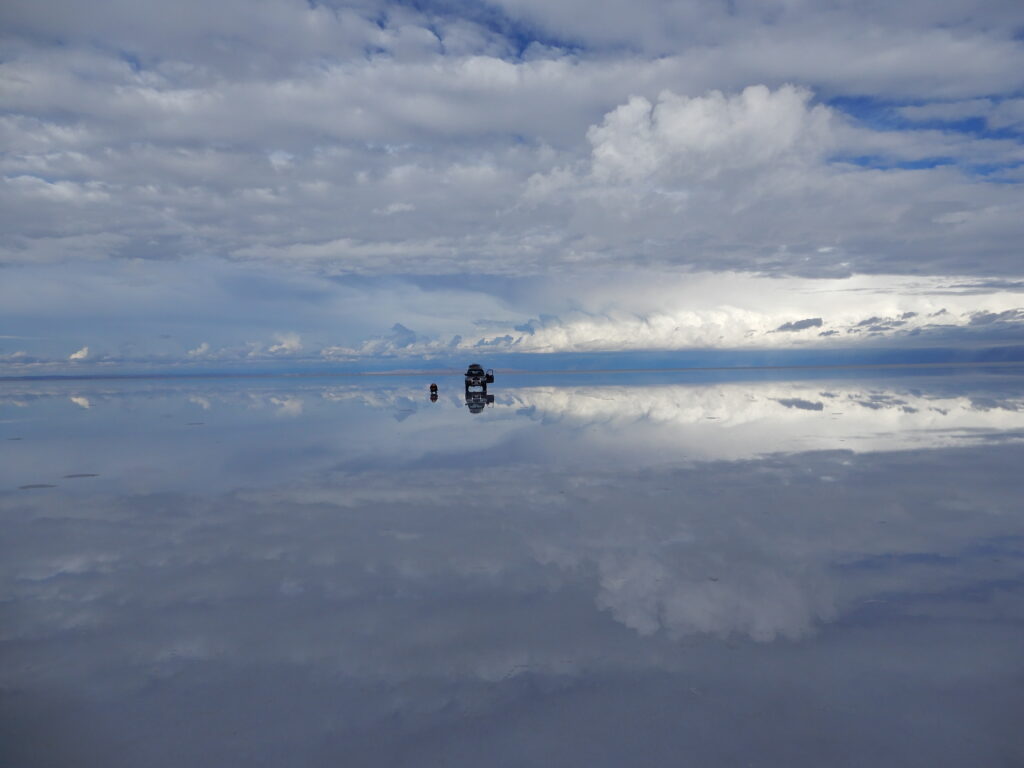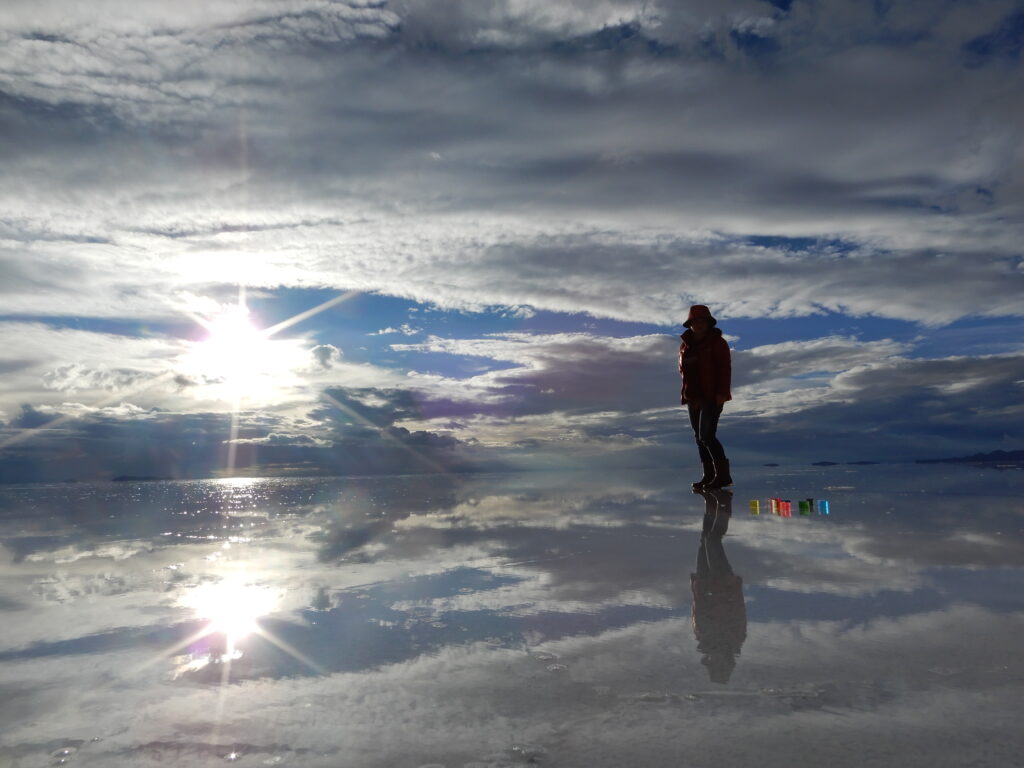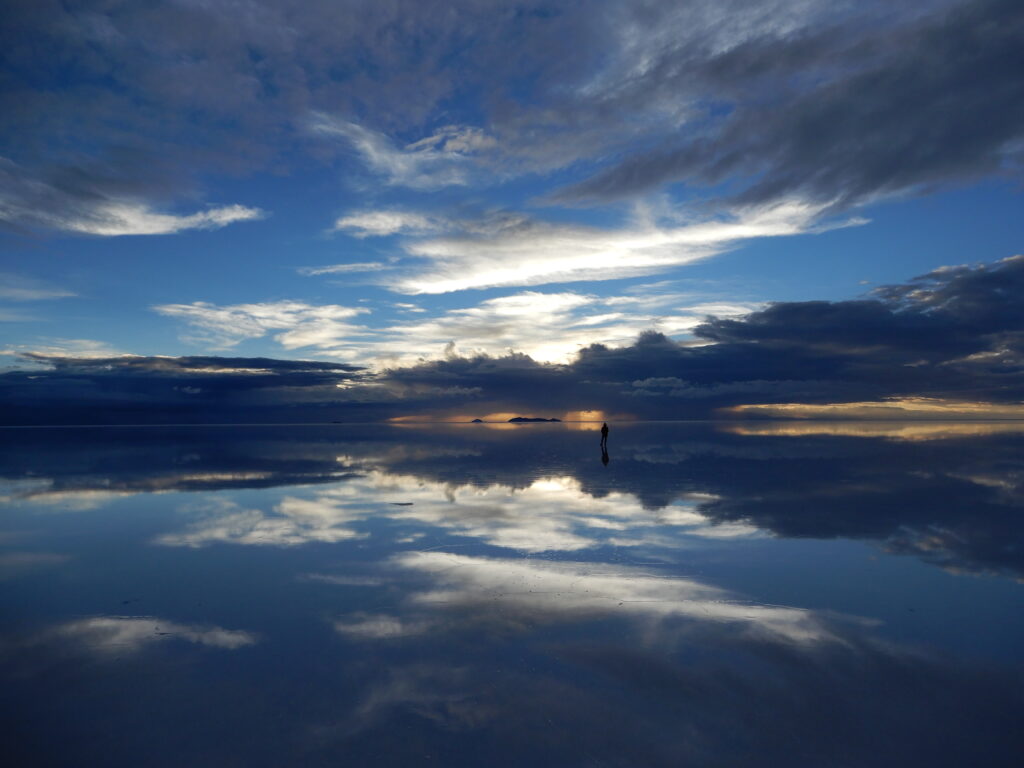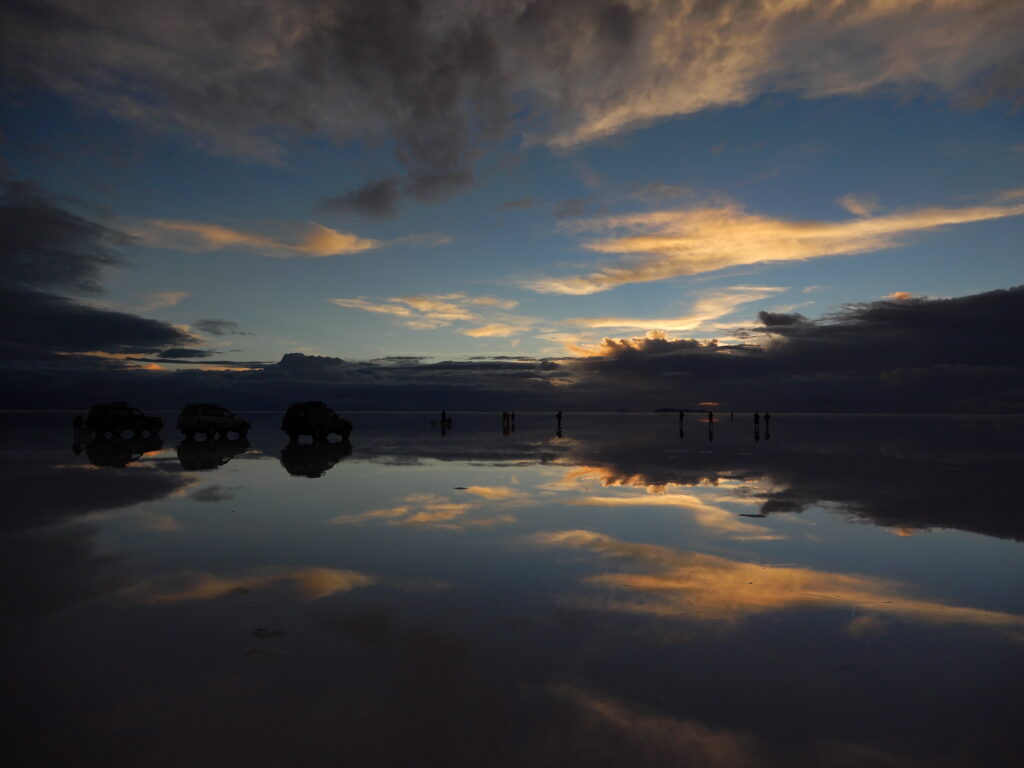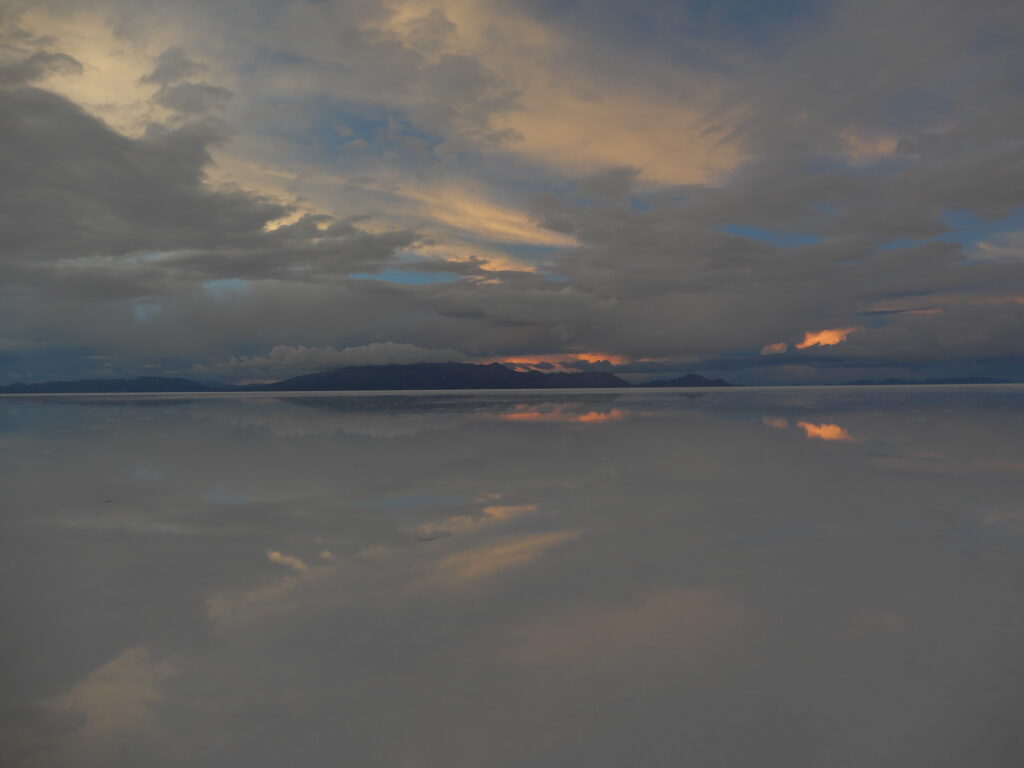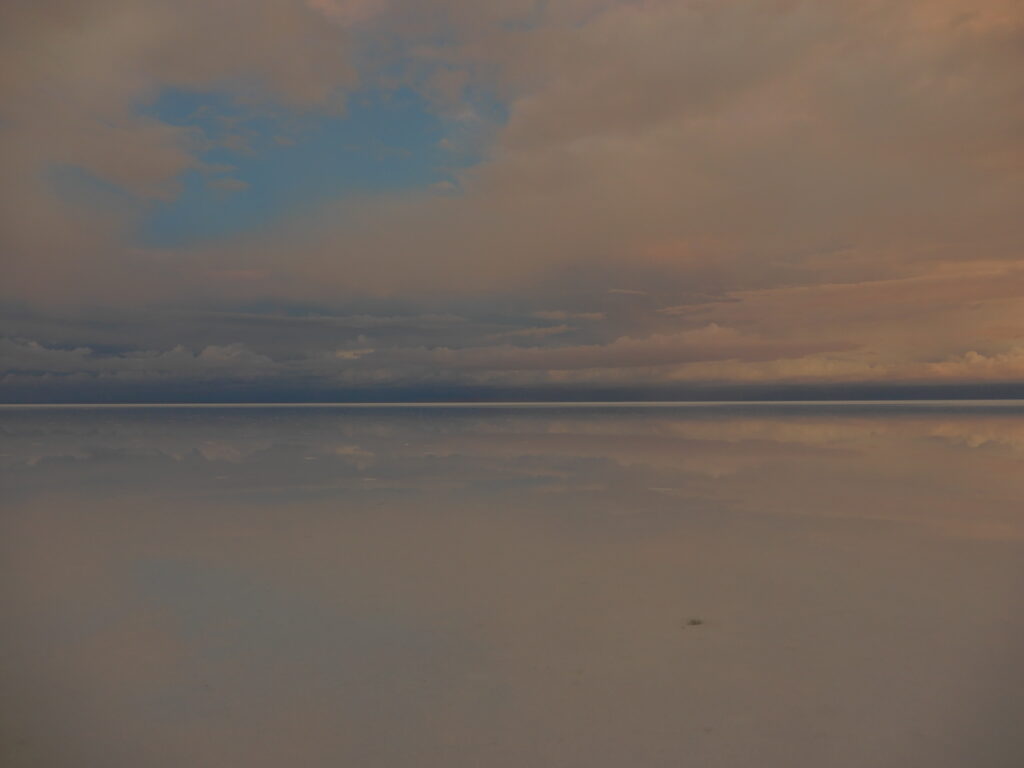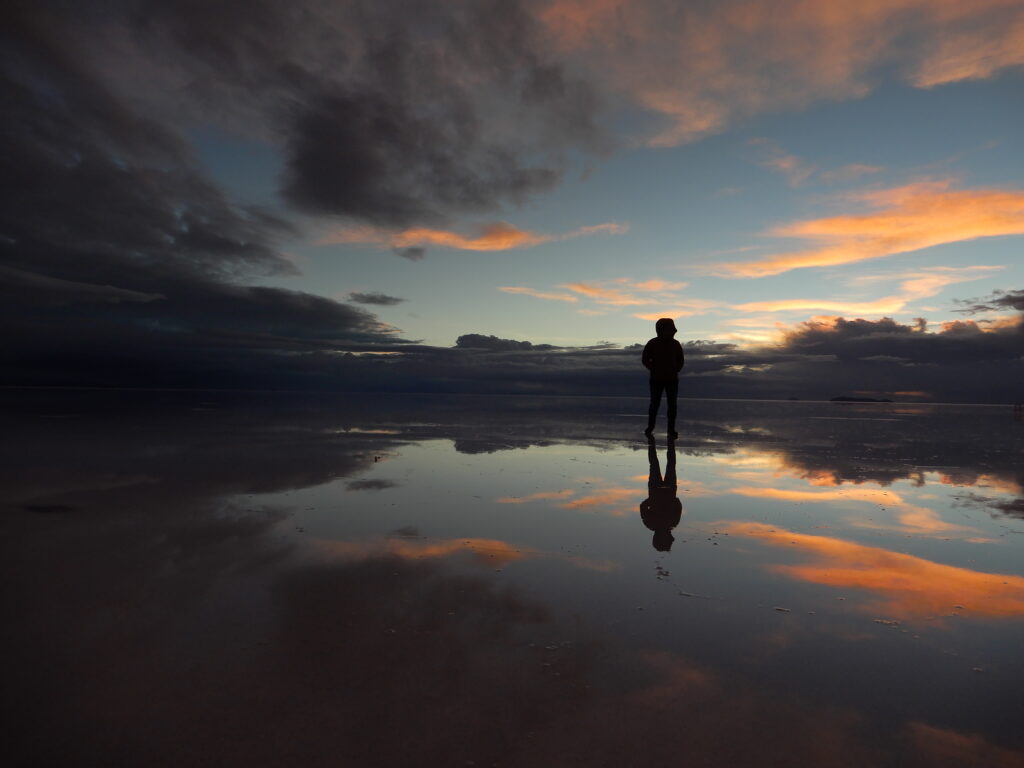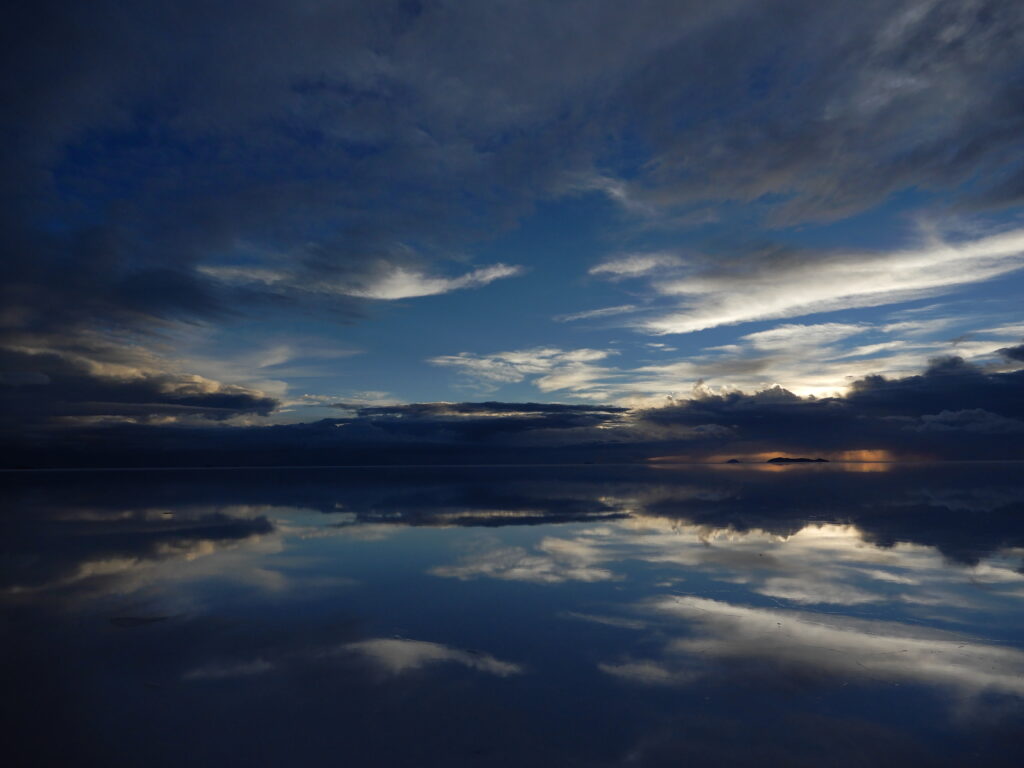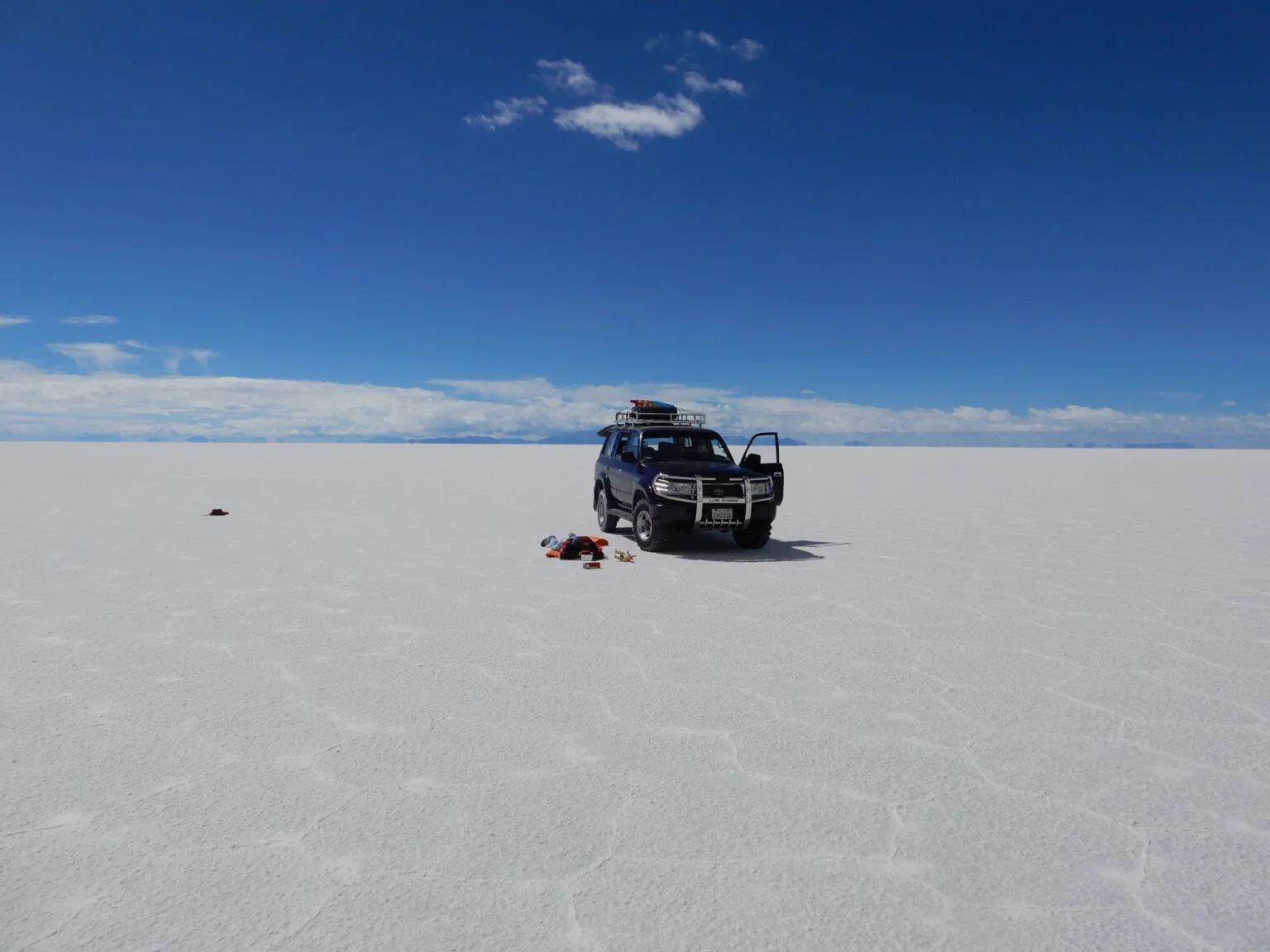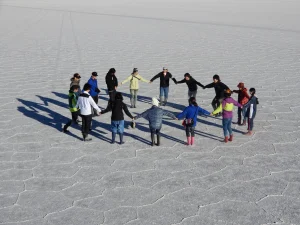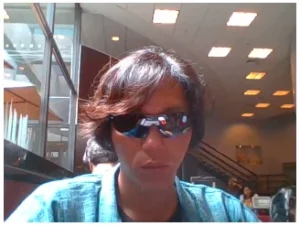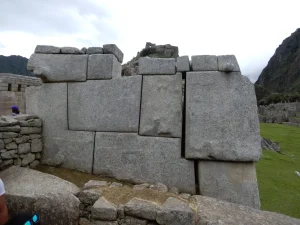Around the World for the 1st time [Day 20] Salar de Uyuni
Salar de Uyuni
After breakfast at the hotel, we rummaged through the rows of tour shops to find a car to take us to Salar de Uyuni. Shared rides are cheaper, but we didn’t want to do that, so we chartered a car. US dollars are also very useful here. When I paid the lady who seemed to be the owner of the shop the fee ($200) in US dollars, she was very happy! She kissed the dollar note. The dollar was a new note, so she crumpled it up. New dollar notes are rough and have a lot of friction, you know.
We started in a four-wheel drive Land Cruiser. The rental car in Rapa Nui was also a Japanese car, though left-hand drive, and here too a Japanese car. I’m very happy. After driving for a few minutes, we stop in front of a building. When we enter, we see a row of boots. We pick them out and take them with us, as we need them when we enter Salar de Uyuni. So that’s how it is. Boots worn by people from all over the world… I don’t like it, but I have no choice. We choose a pair and go into the car.

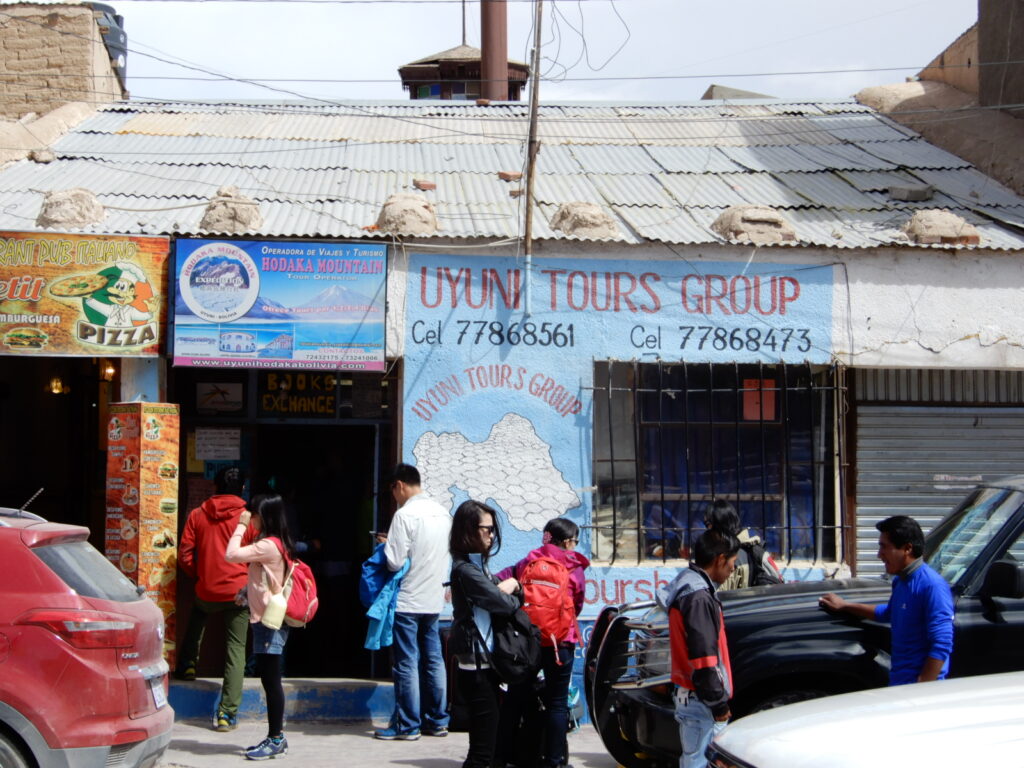
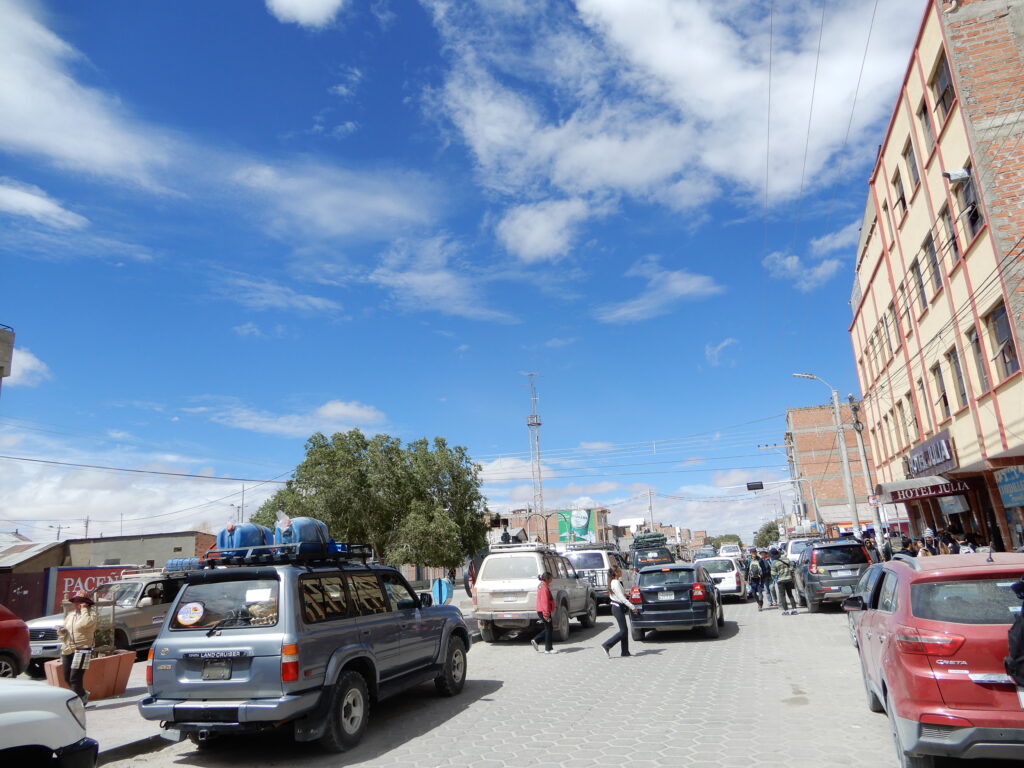
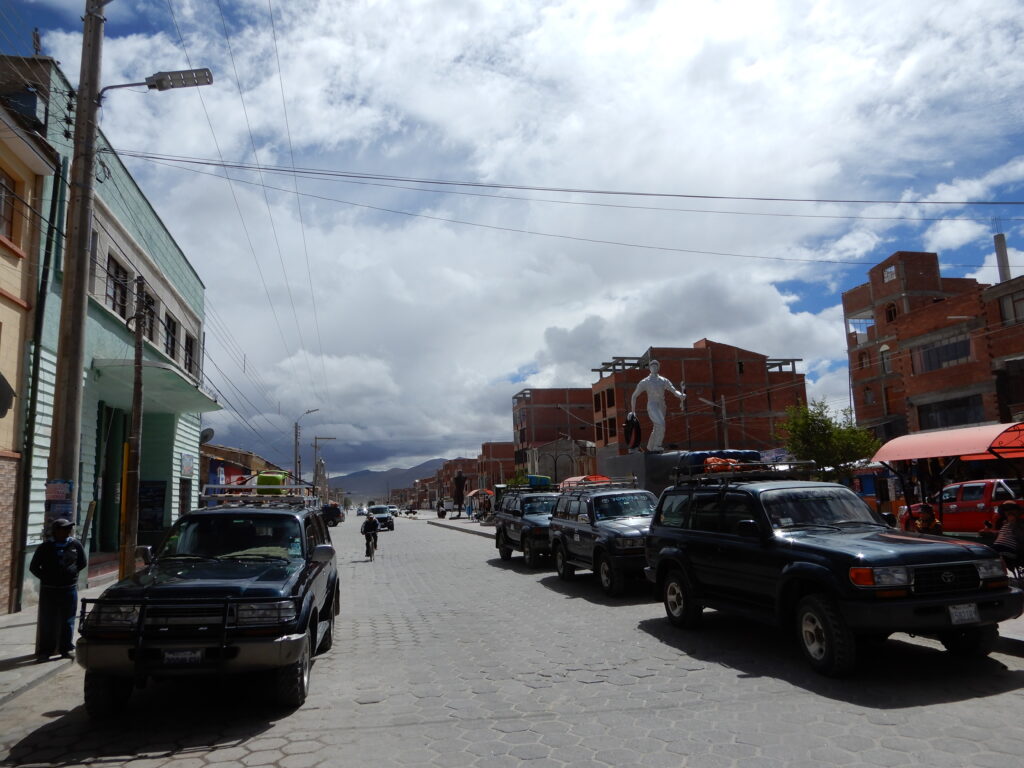
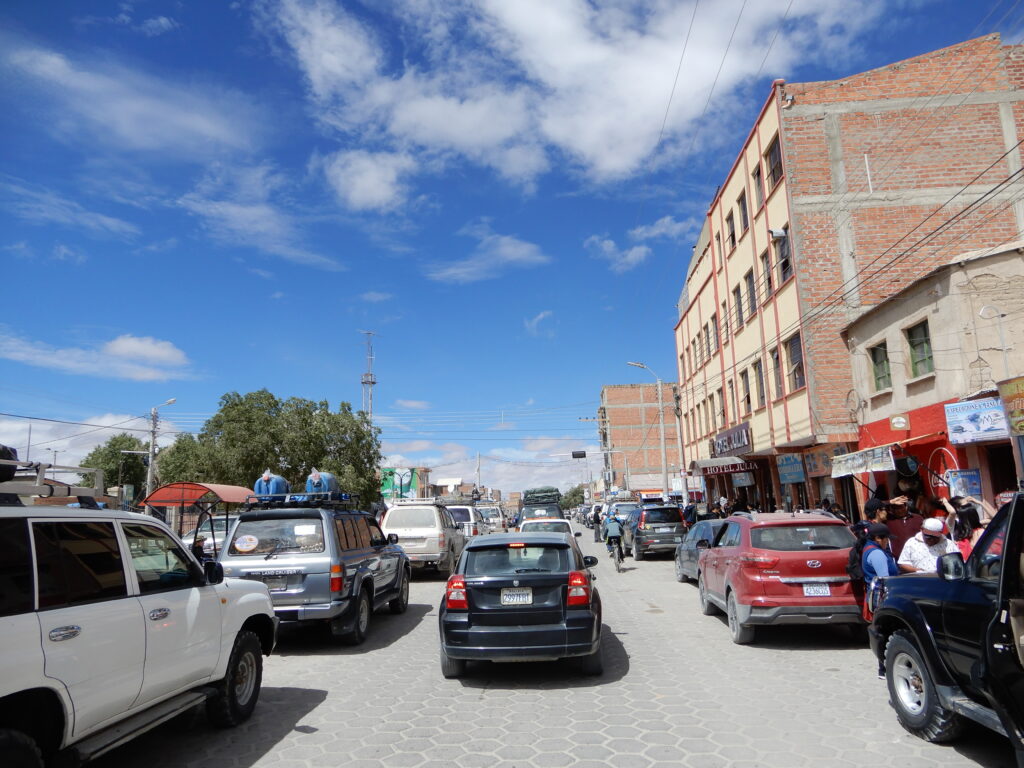

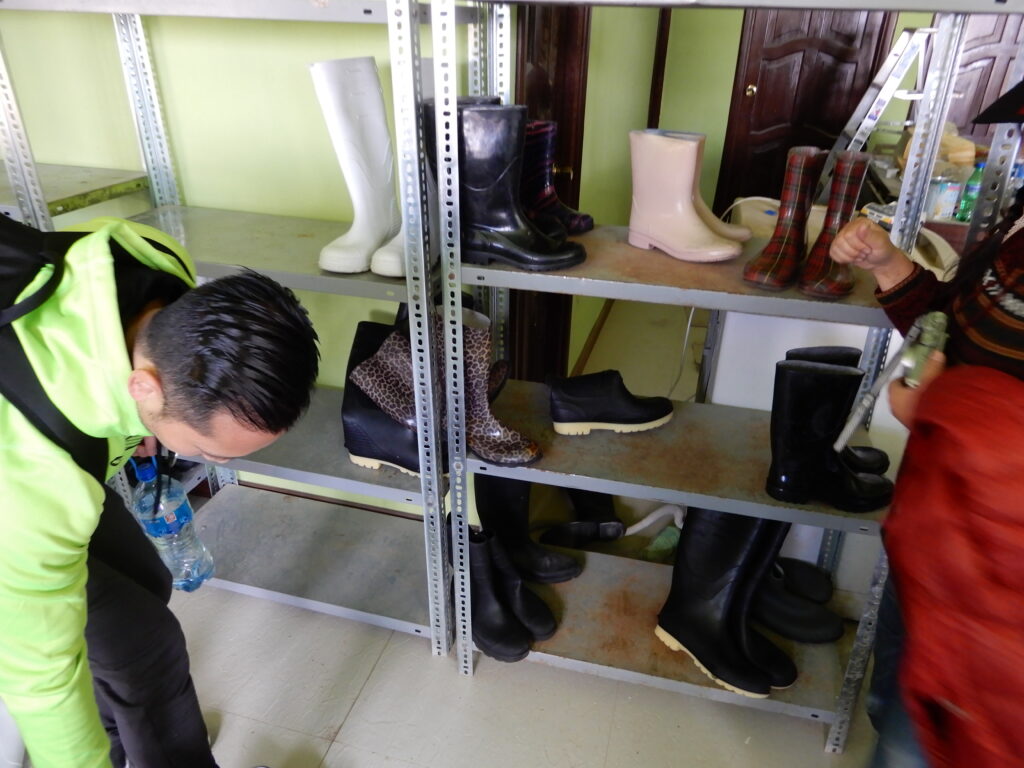
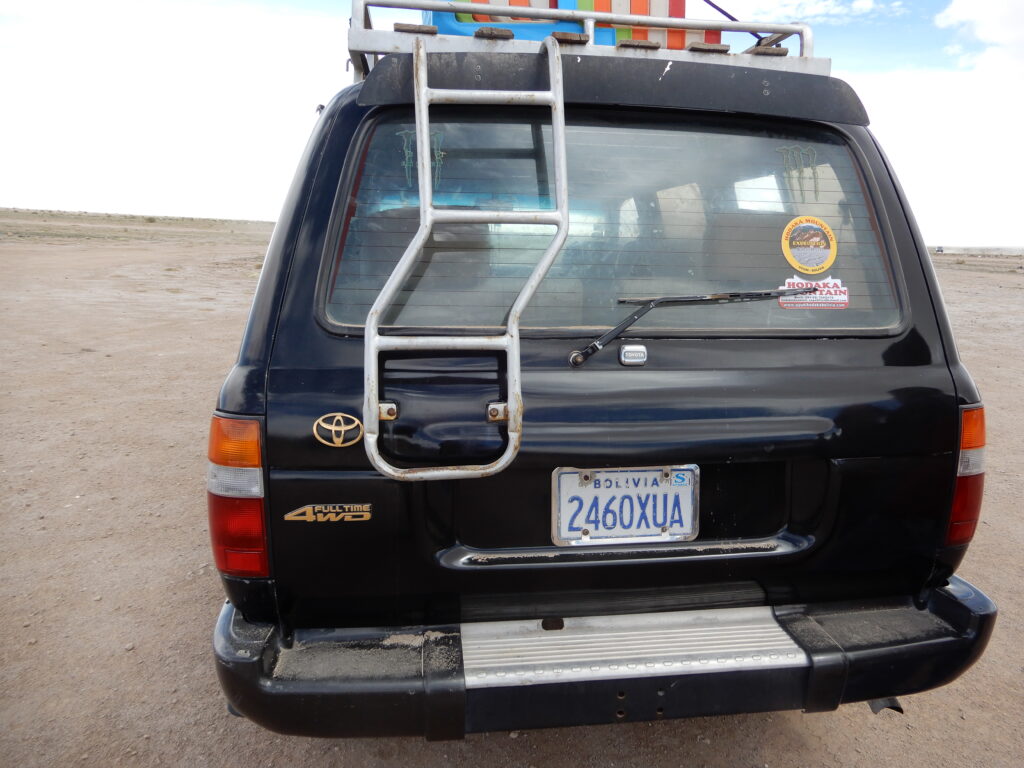
Train graveyard
After a 10-minute ride, we first went to the ‘train graveyard’. This is where the mermaid wanted to come and was very happy! We had a leisurely two hours here. You are also free to climb on the roof of the train. It is quite high when you stand on top! It’s so high that if you fall off, you could be seriously injured or even killed. In fact, some people die every year from falling off the train.

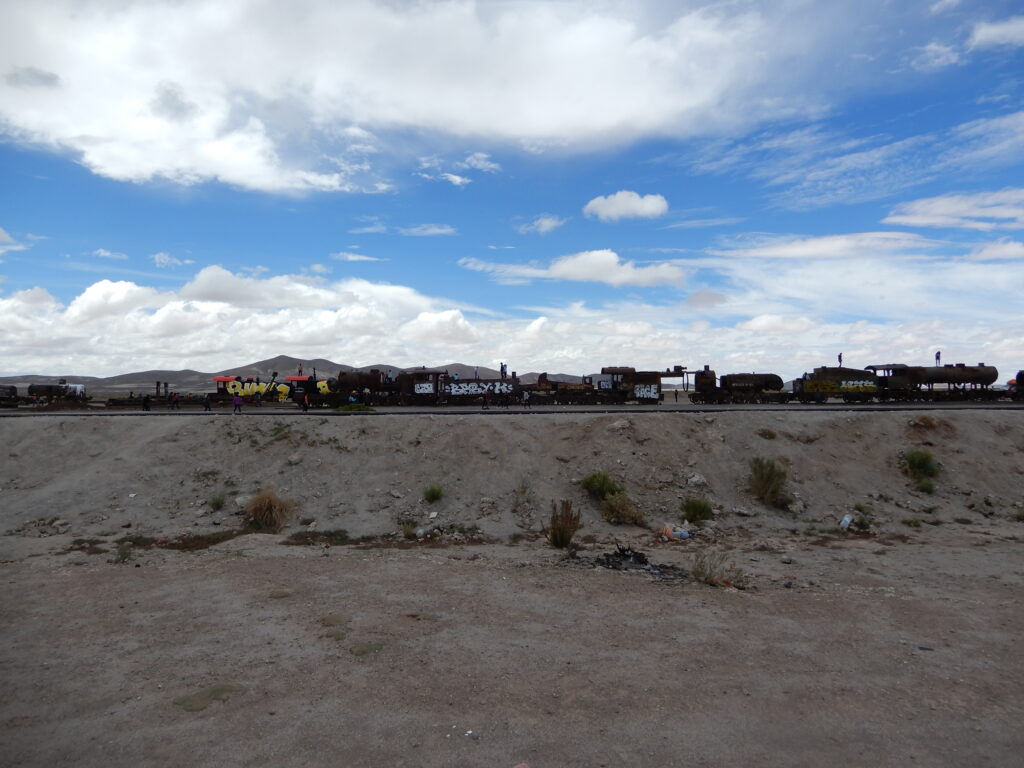
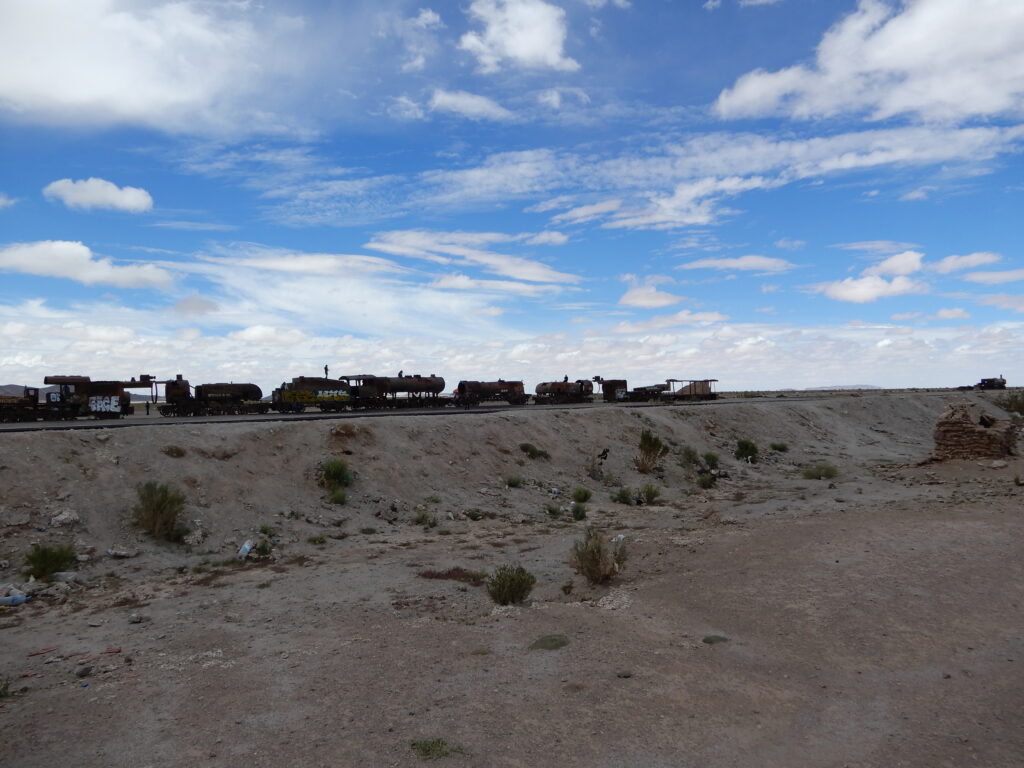
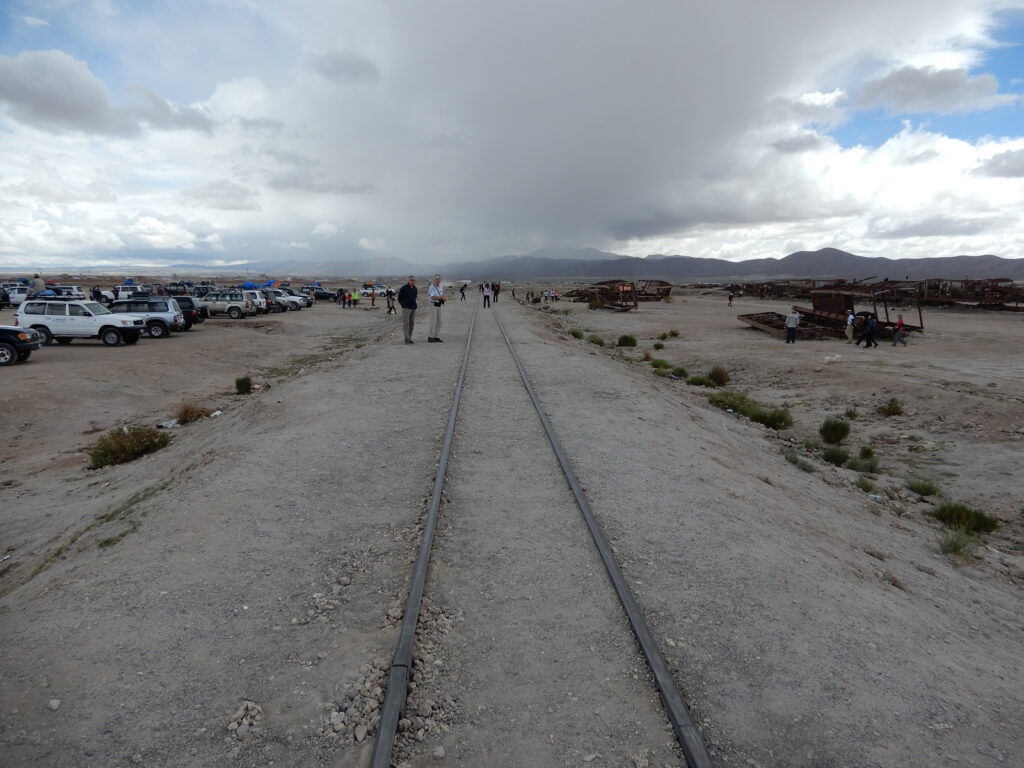
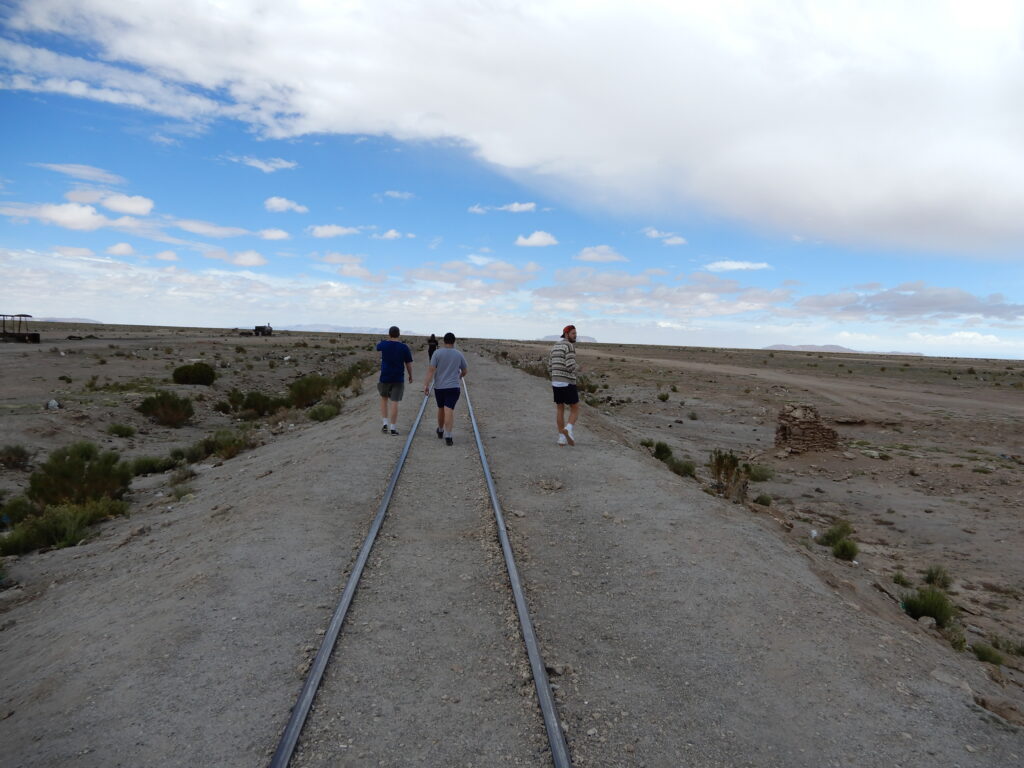
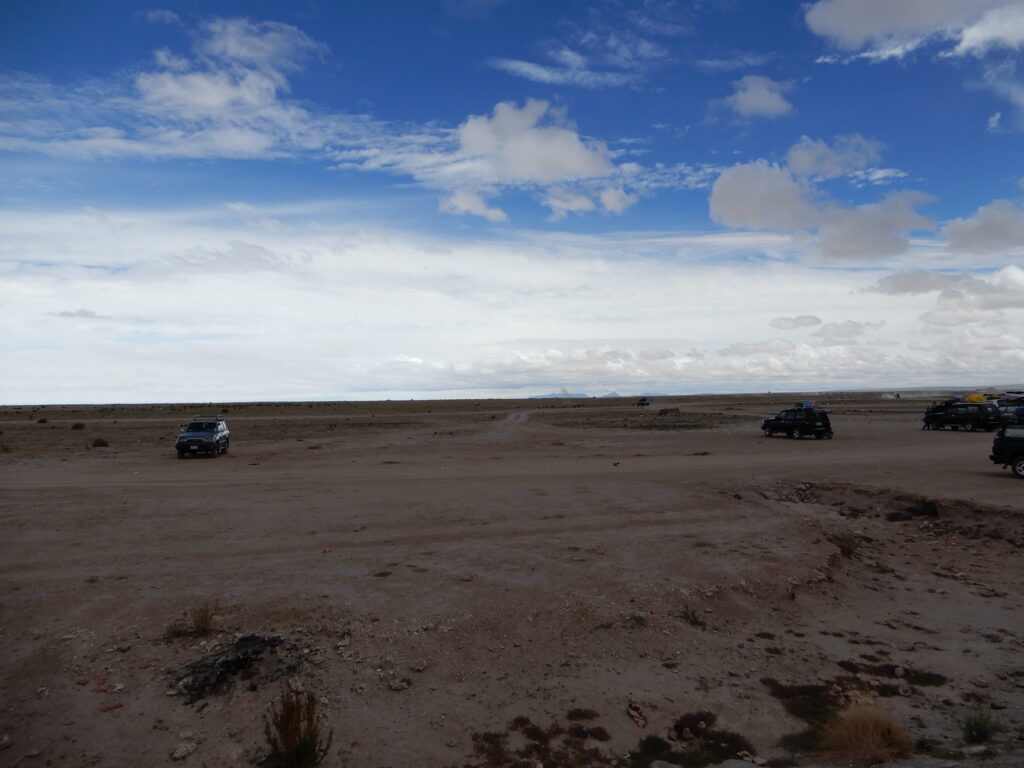
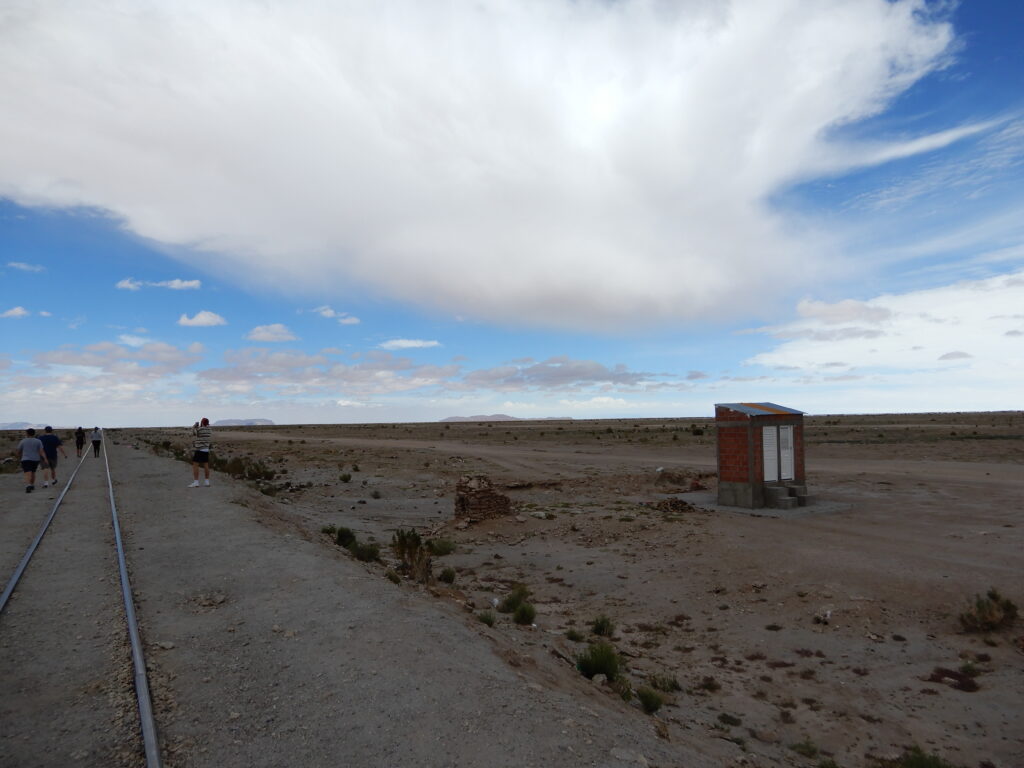
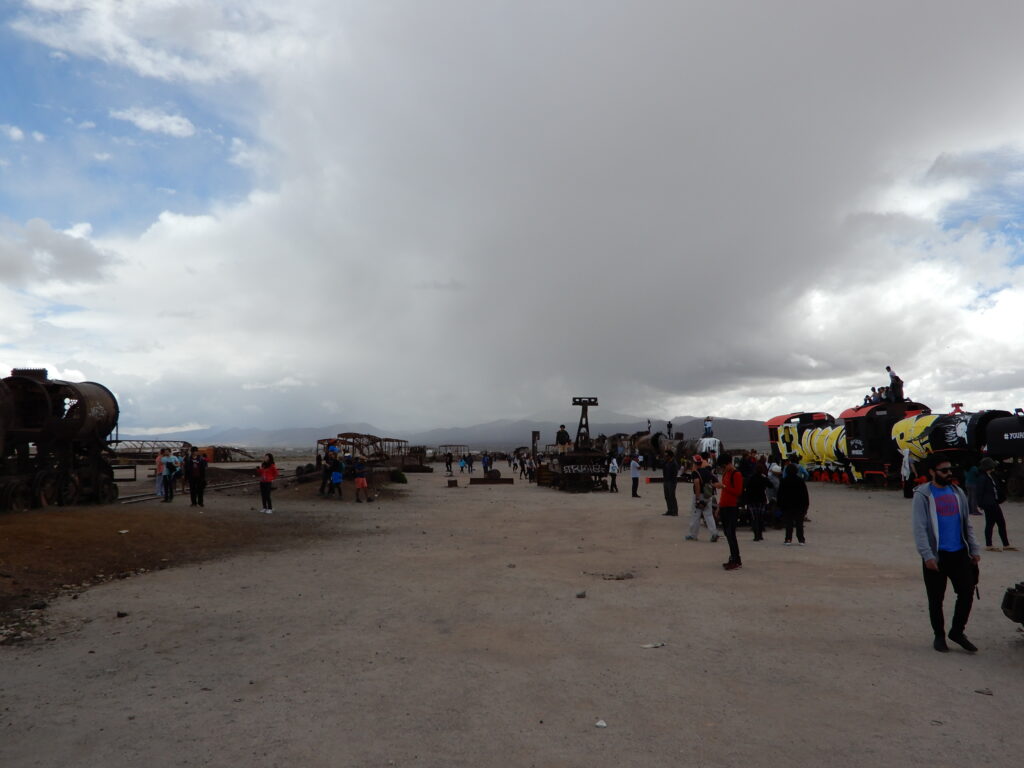

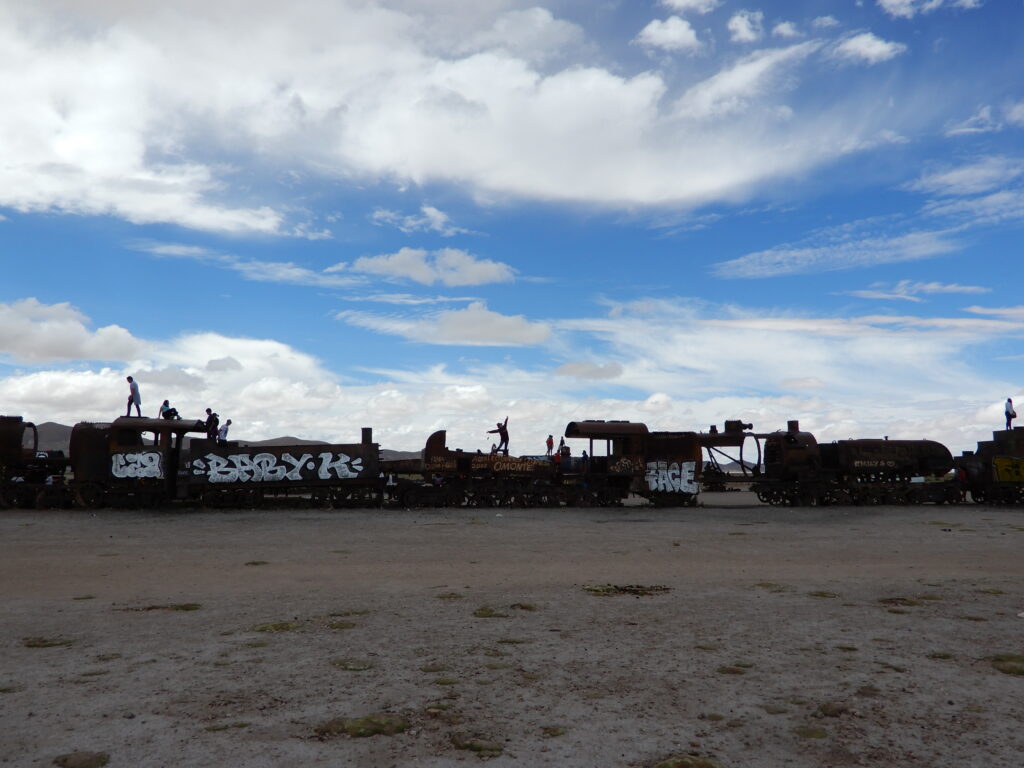
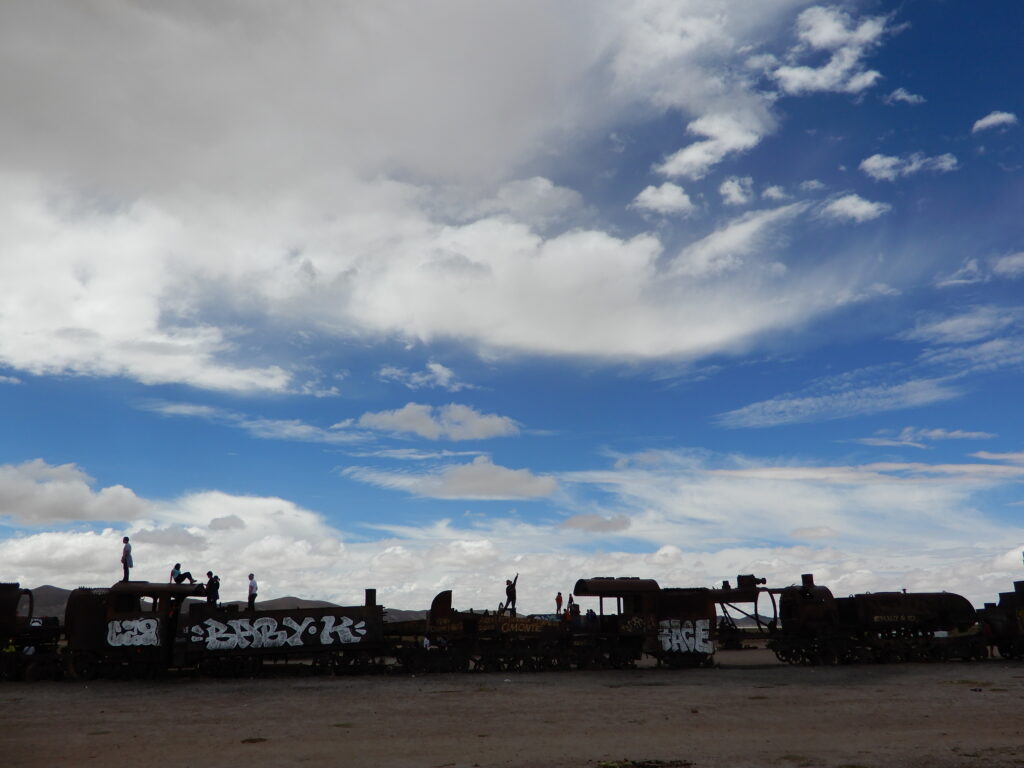
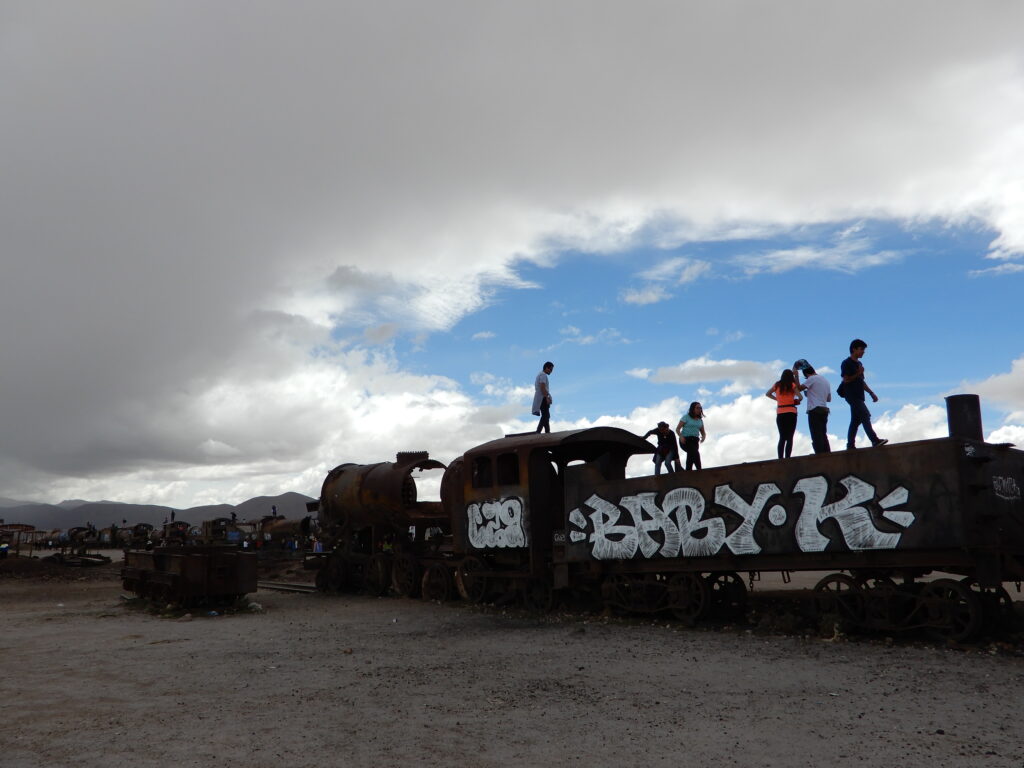
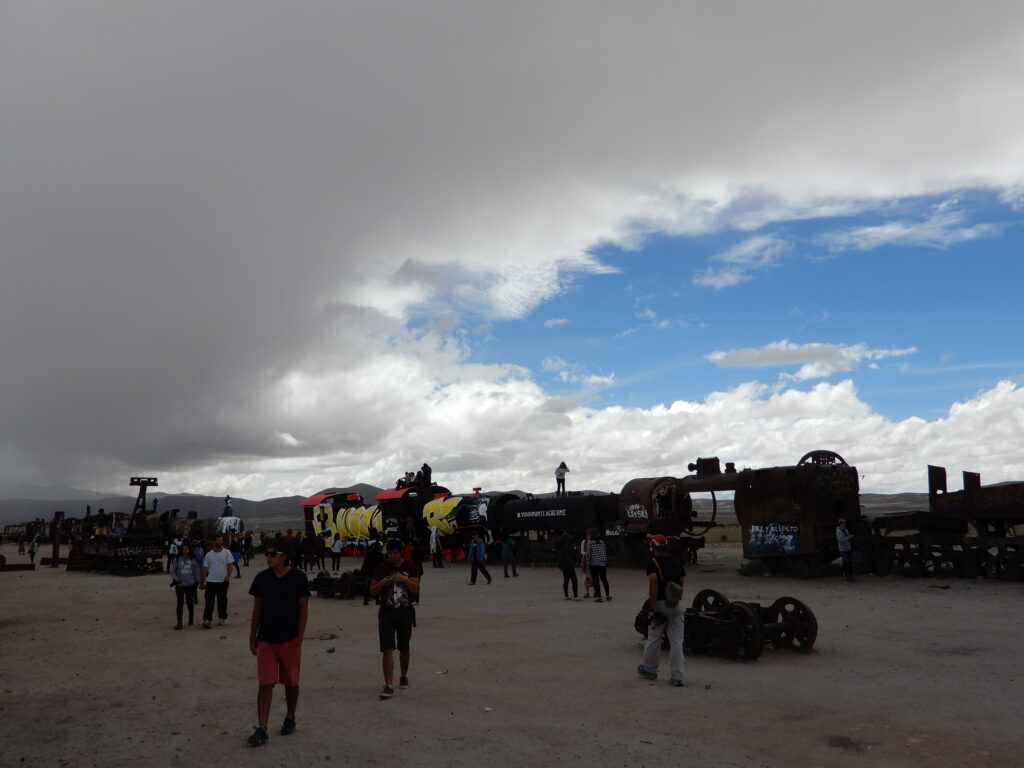

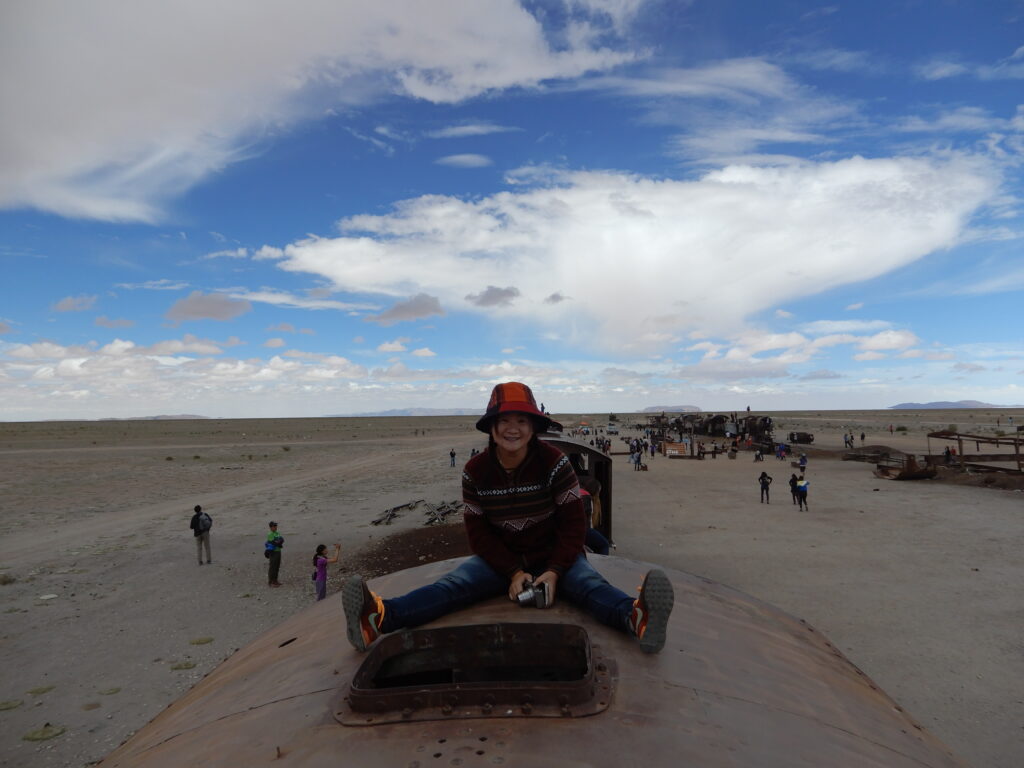
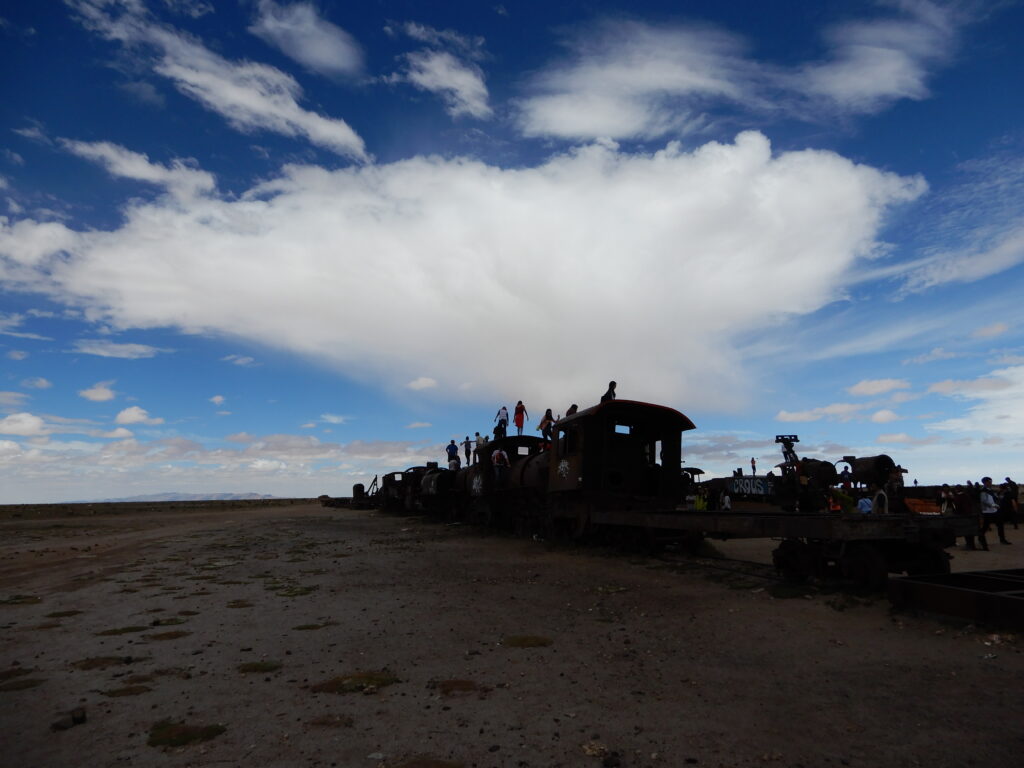
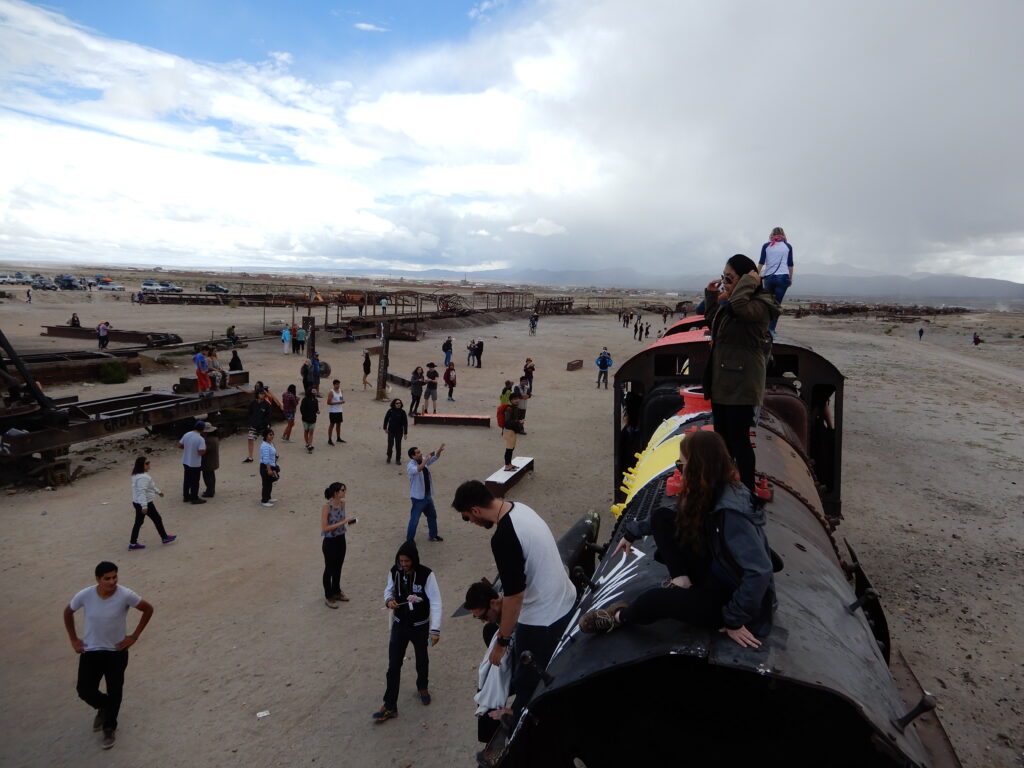

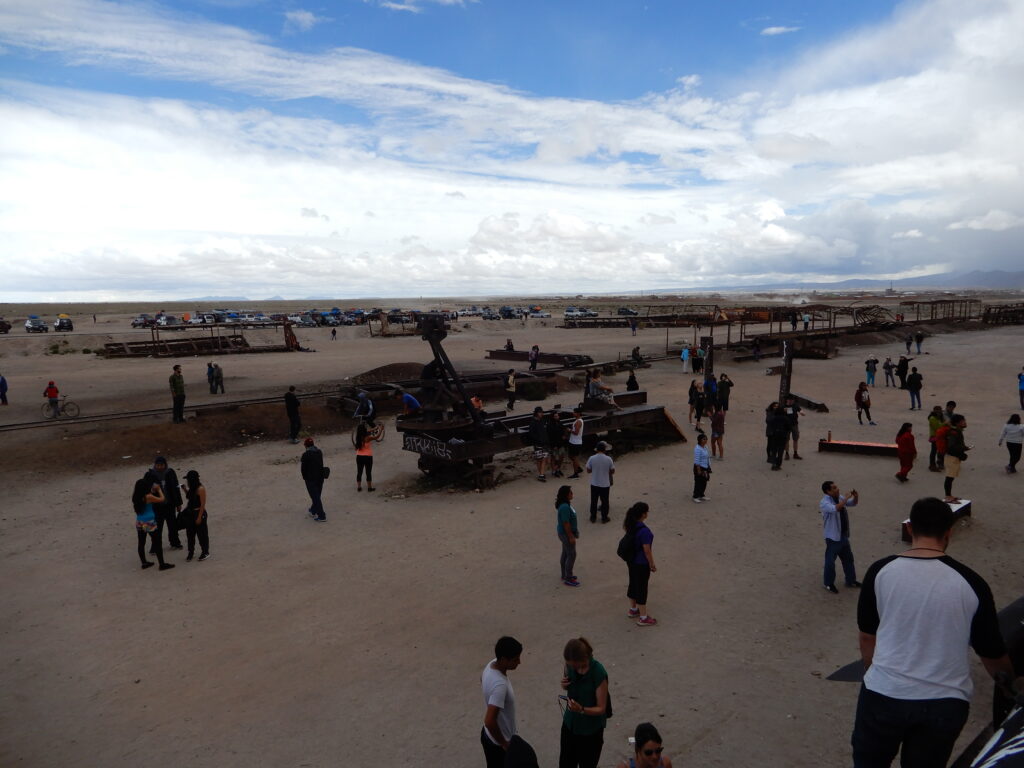
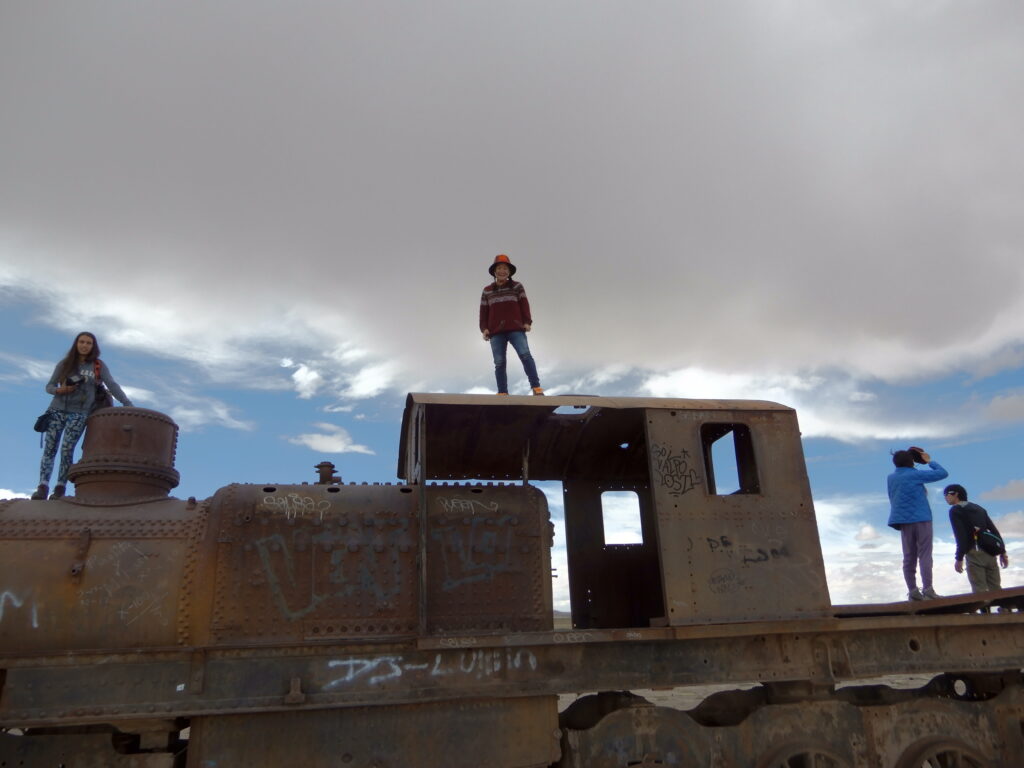
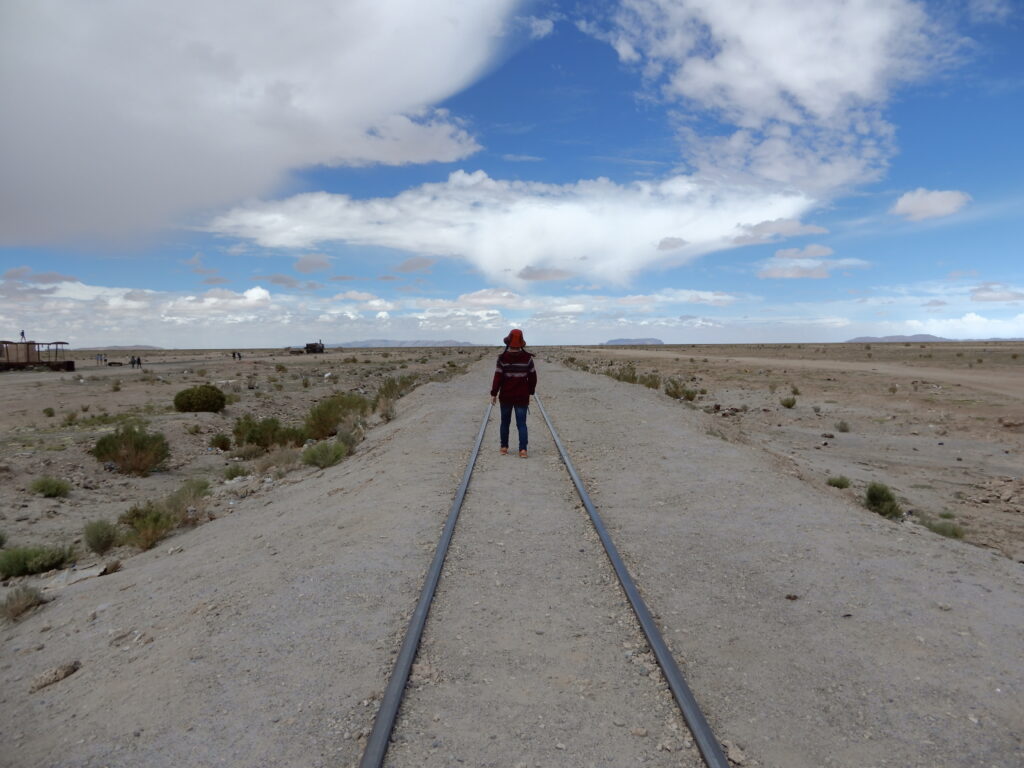
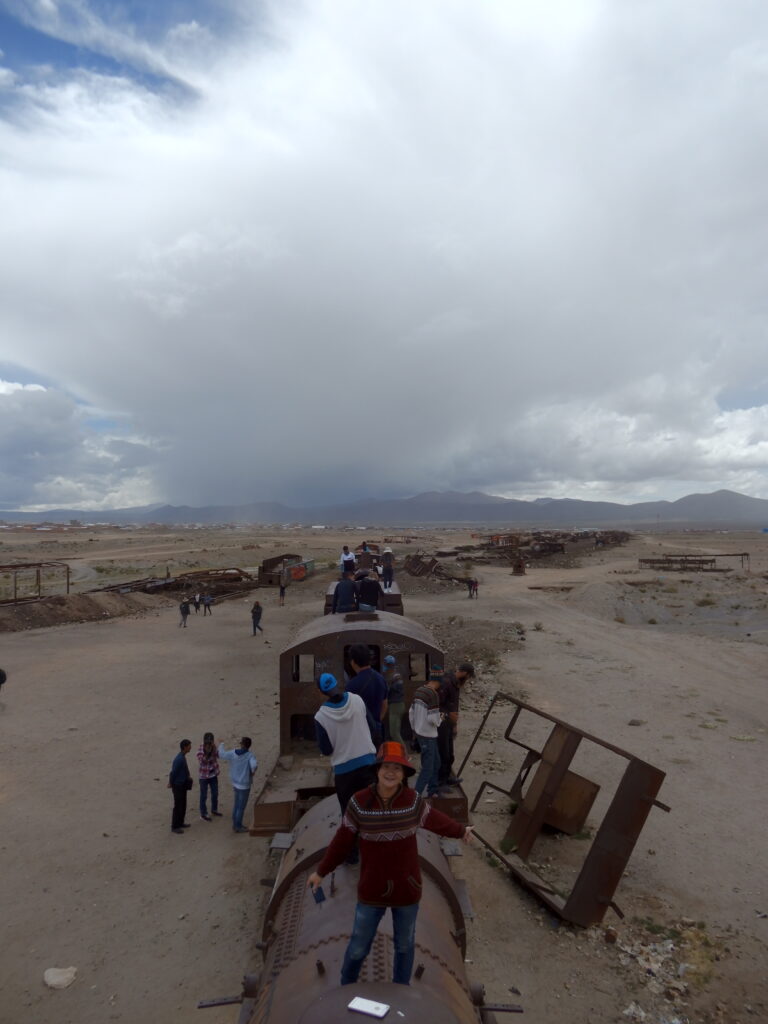

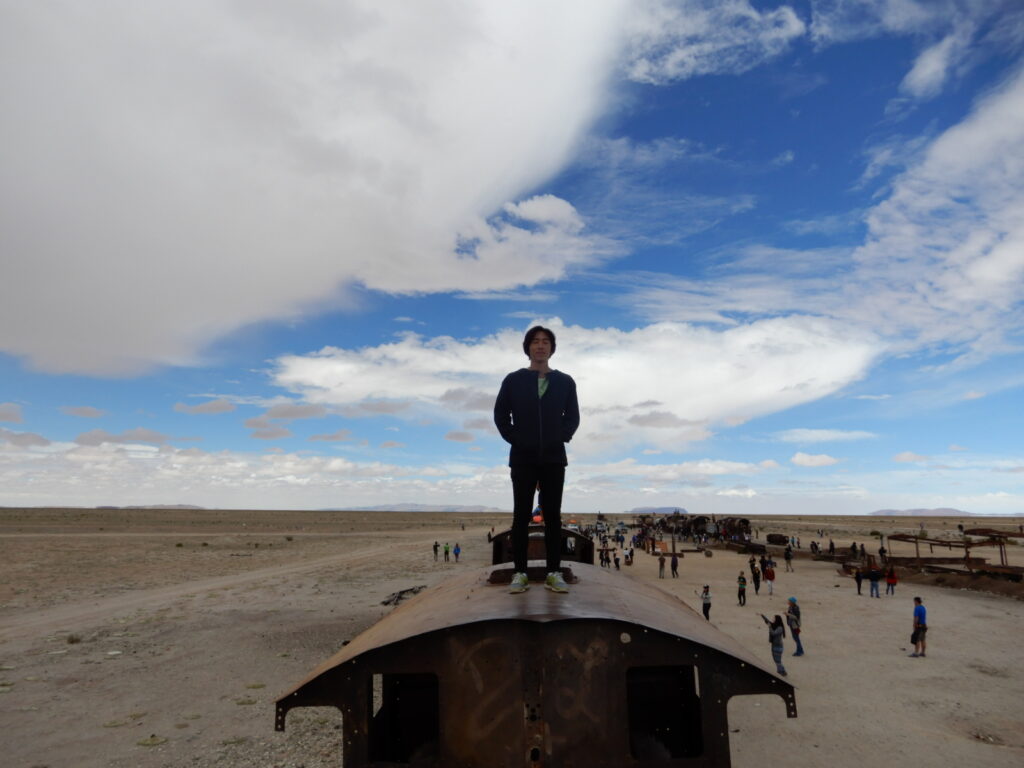
Market in Colchani village
A 30-minute drive from the train graveyard took us to a market lined with dugout souvenir shops. I see, the whole community is working together to get the money down. The shops were all interesting and I bought a hat.
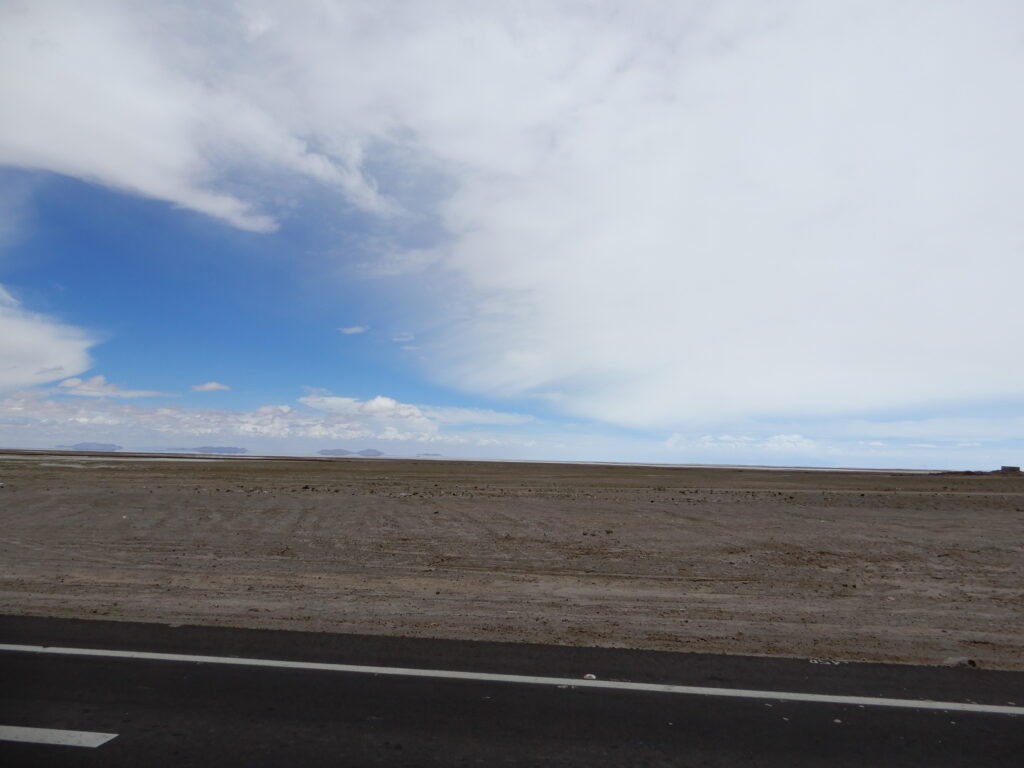
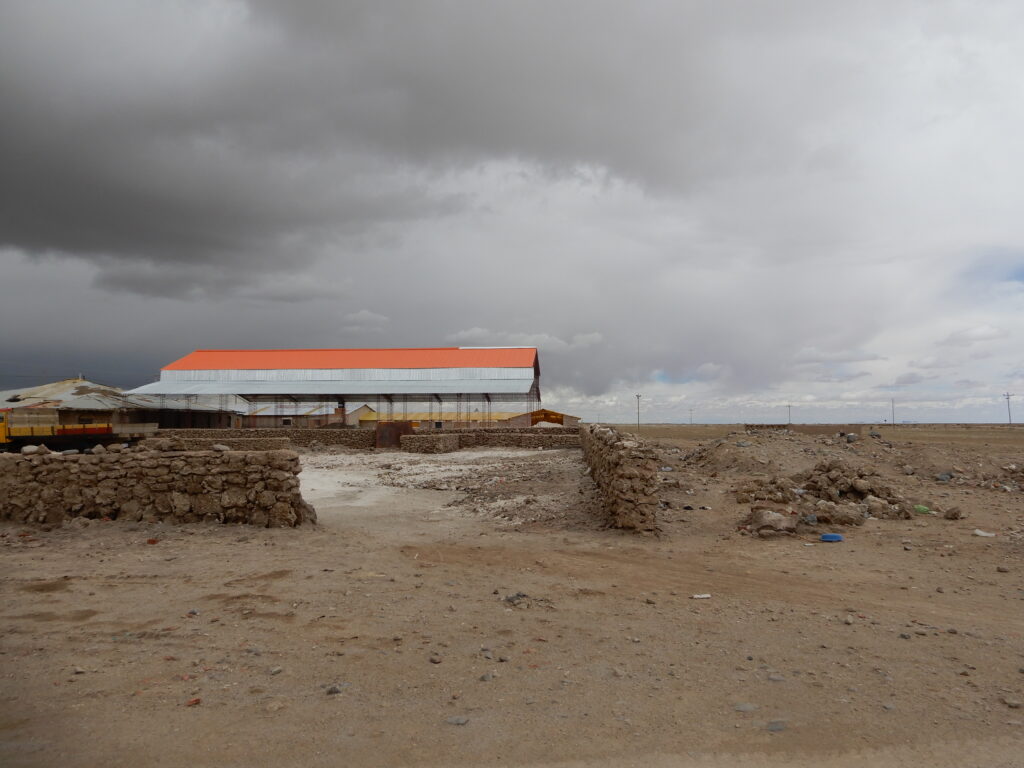

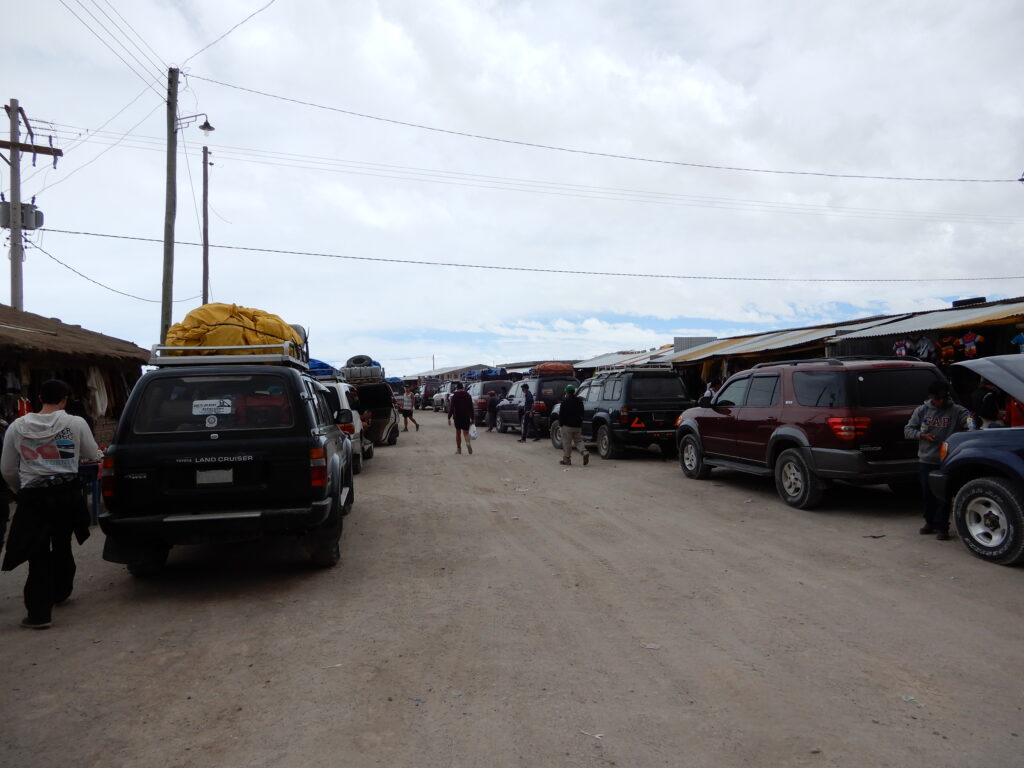
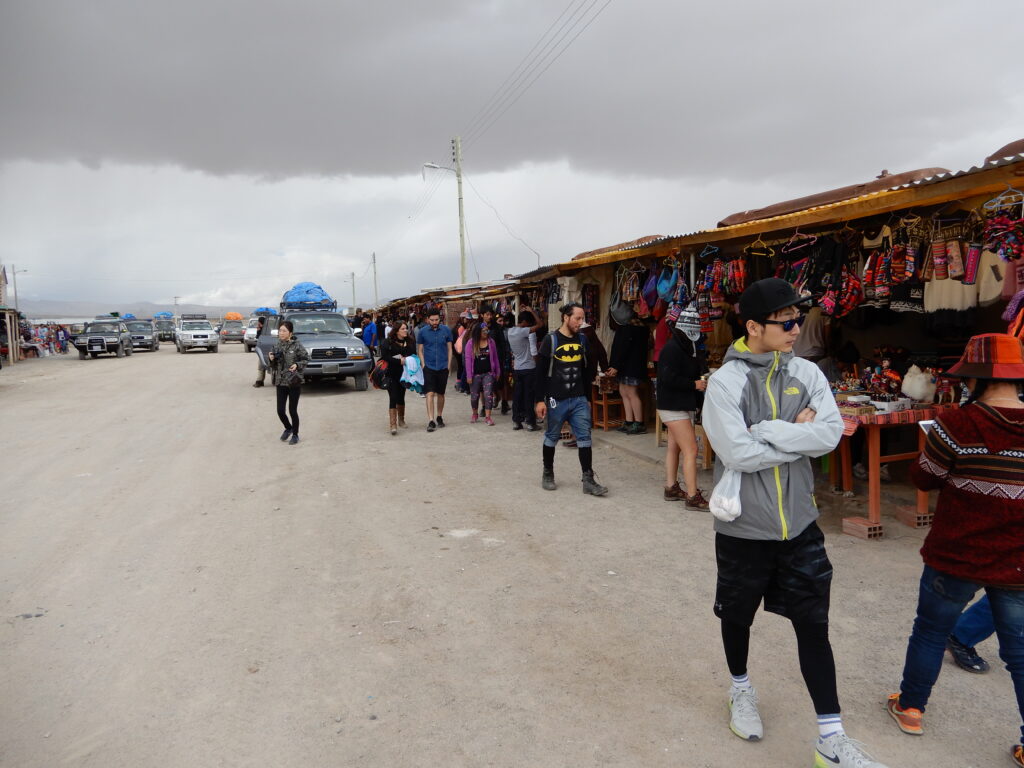
Salar de Uyuni
After an hour’s shopping, we returned to the car and set off for Salar de Uyuni, which I think took about an hour. As we got closer to Salar de Uyuni, it became wilderness, and after driving for a while past the toll gates on the main road, we came to the edge of Salar de Uyuni.
We entered a barren area of dry earth. At first, the ground is bumpy and the car shakes with a bumpy motion. After that, the terrain becomes flat and the horizon opens up in a way I have never seen before. Drivers use radio and GPS to exchange information with each other and head for a watery area.
Yes, that’s right. The Salar de Uyuni is not always flooded with water, but we drive in search of flooded areas. The area of Salar de Uyuni is about the size of Gifu Prefecture, so you can never enter the lake without a GPS. When the ground flattens out, the car blasts along at speeds easily in excess of 100 km/h. And the weather changes rapidly. It’s awesome!
The salt land is an endless series of pentagonal patterns. Sitting or lying on the salt makes you gooey. Salt is raked up and shipped away. Well, if there’s this much, it will never run out.
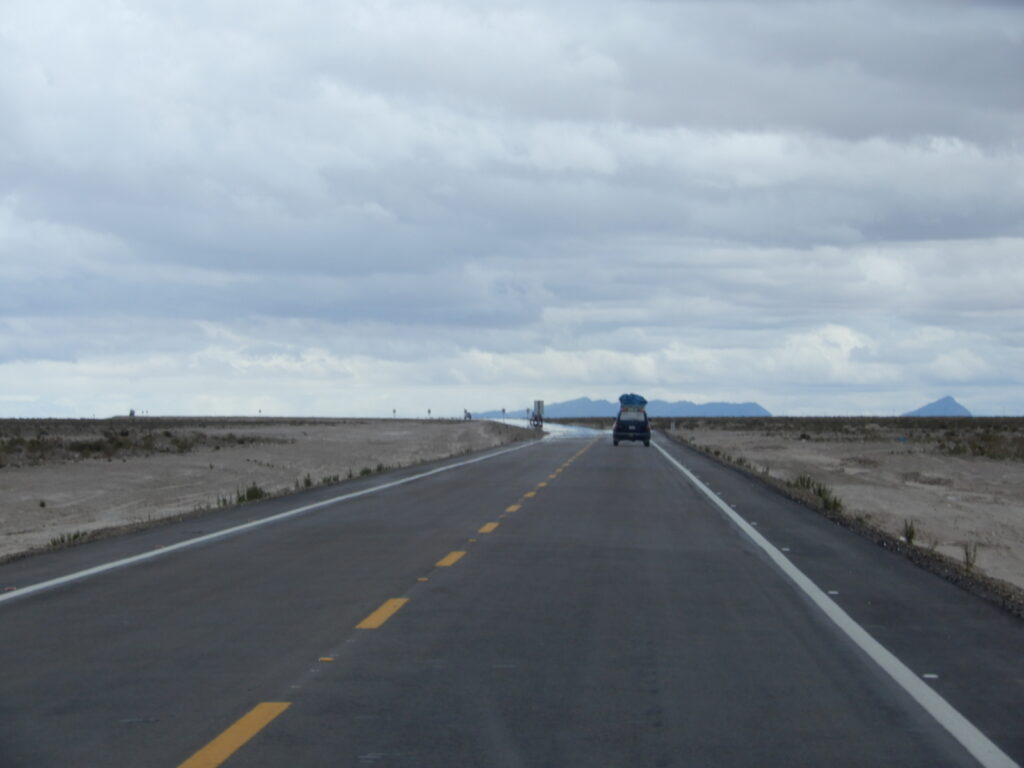
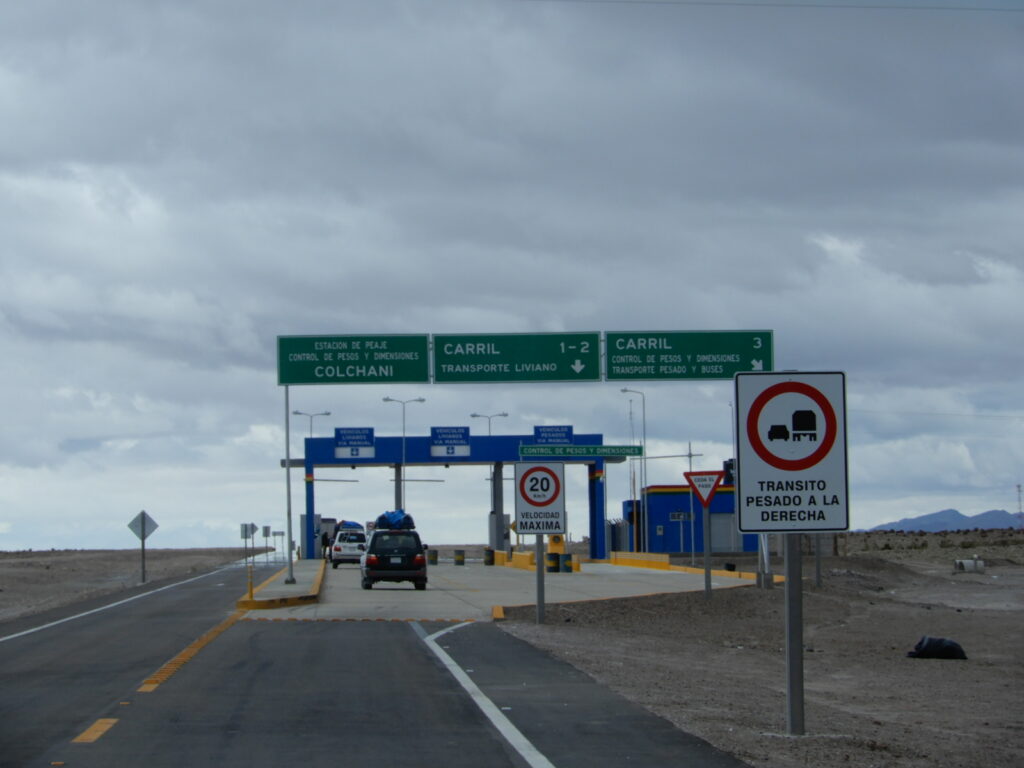

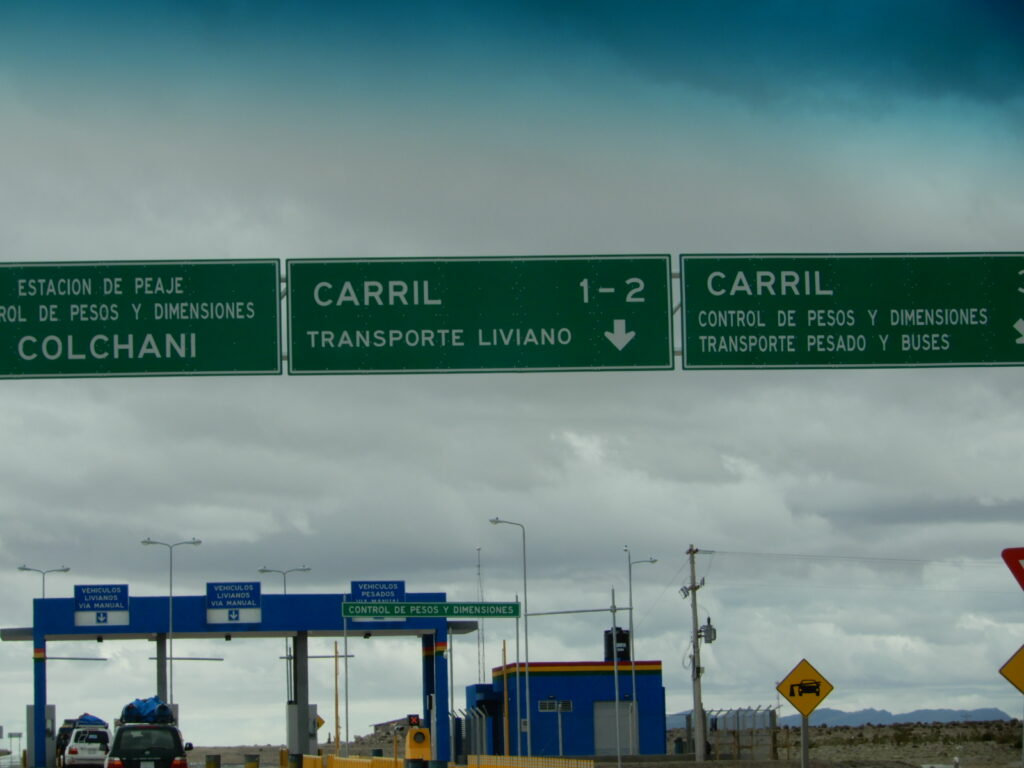
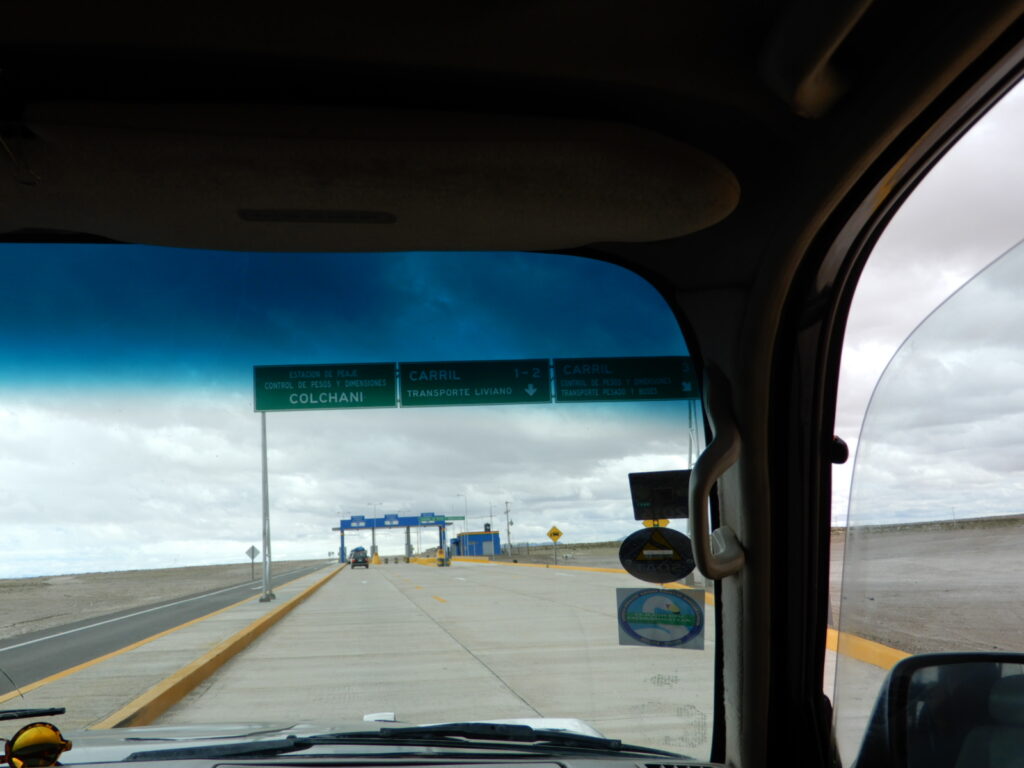

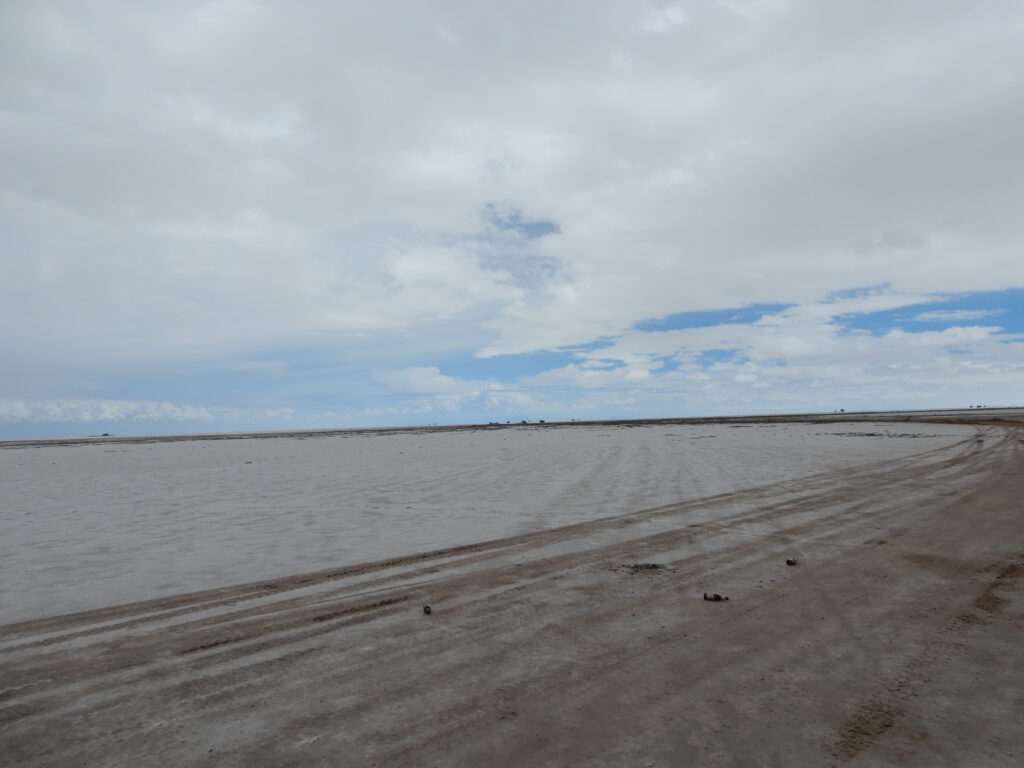
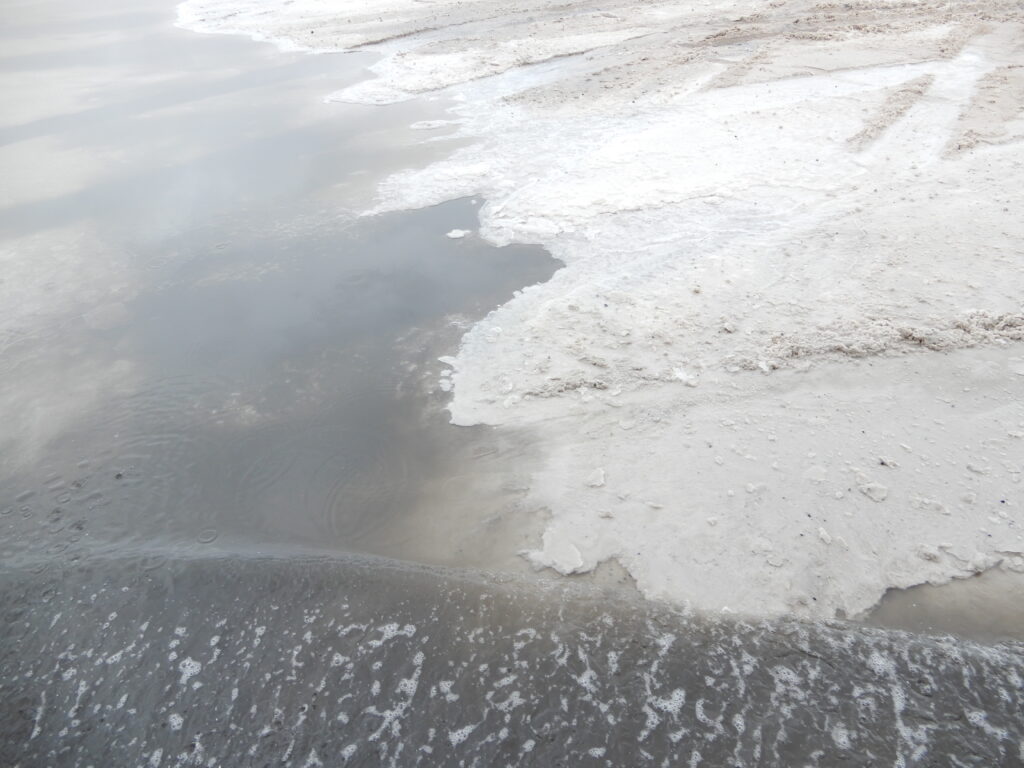
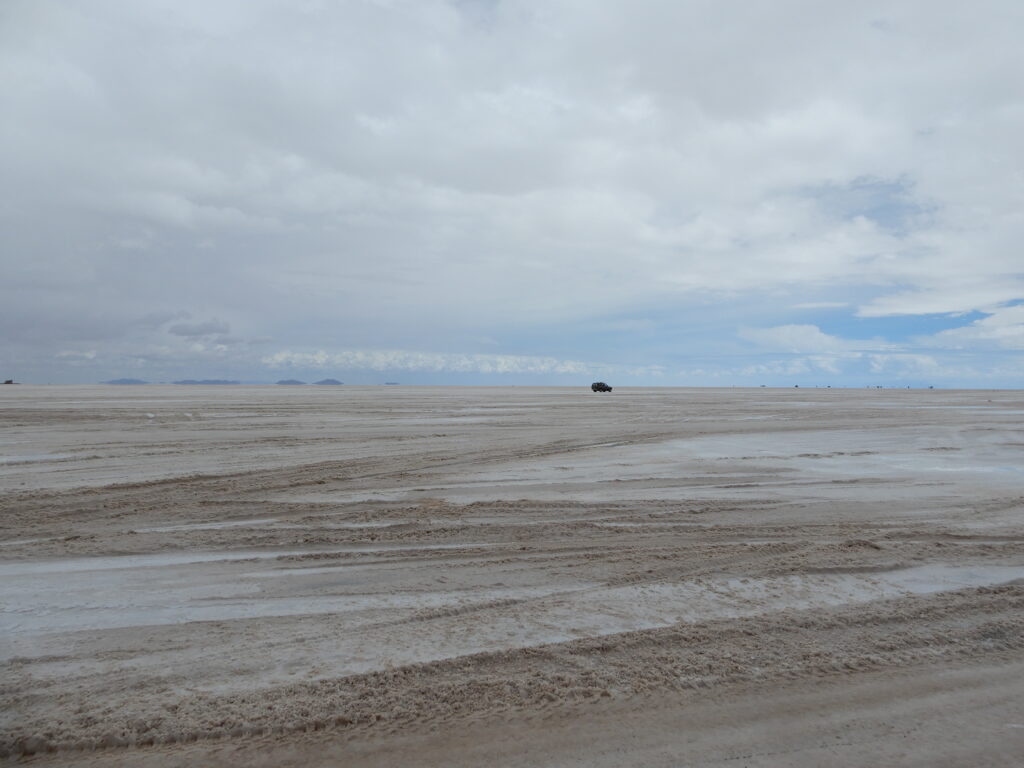
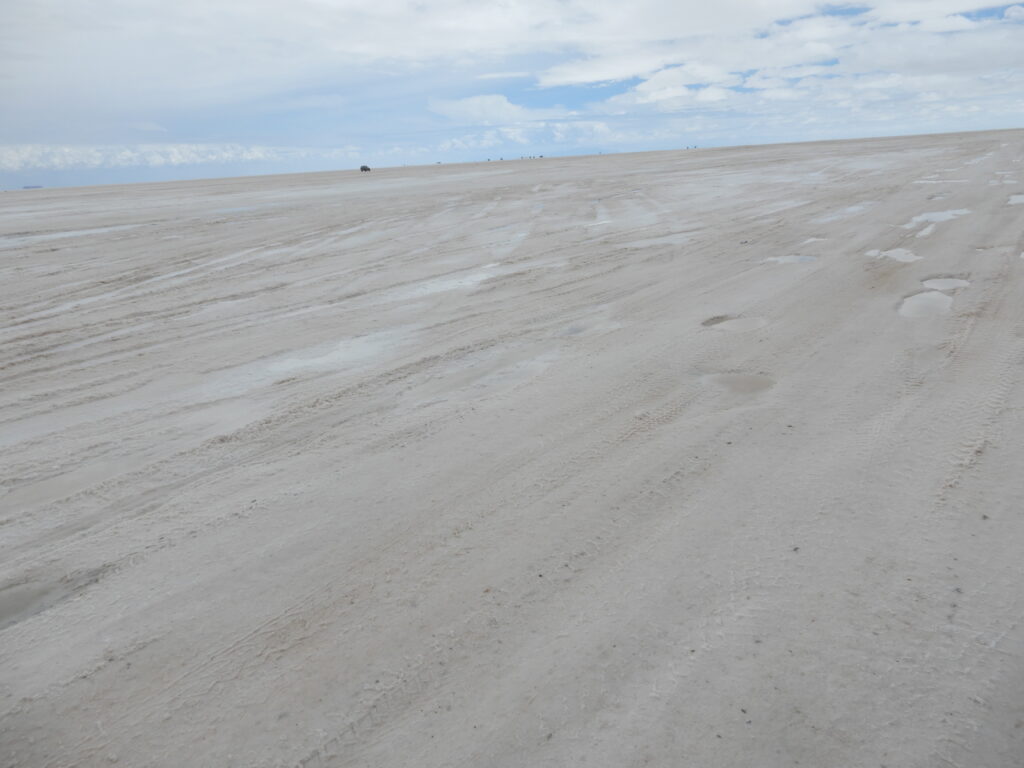
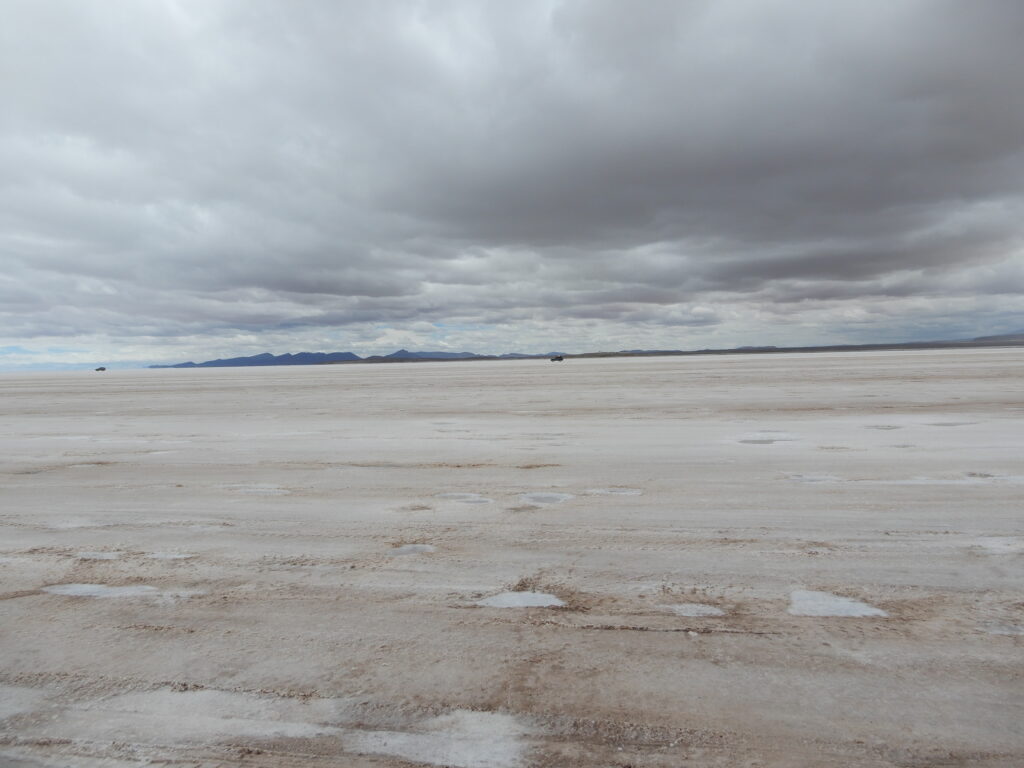
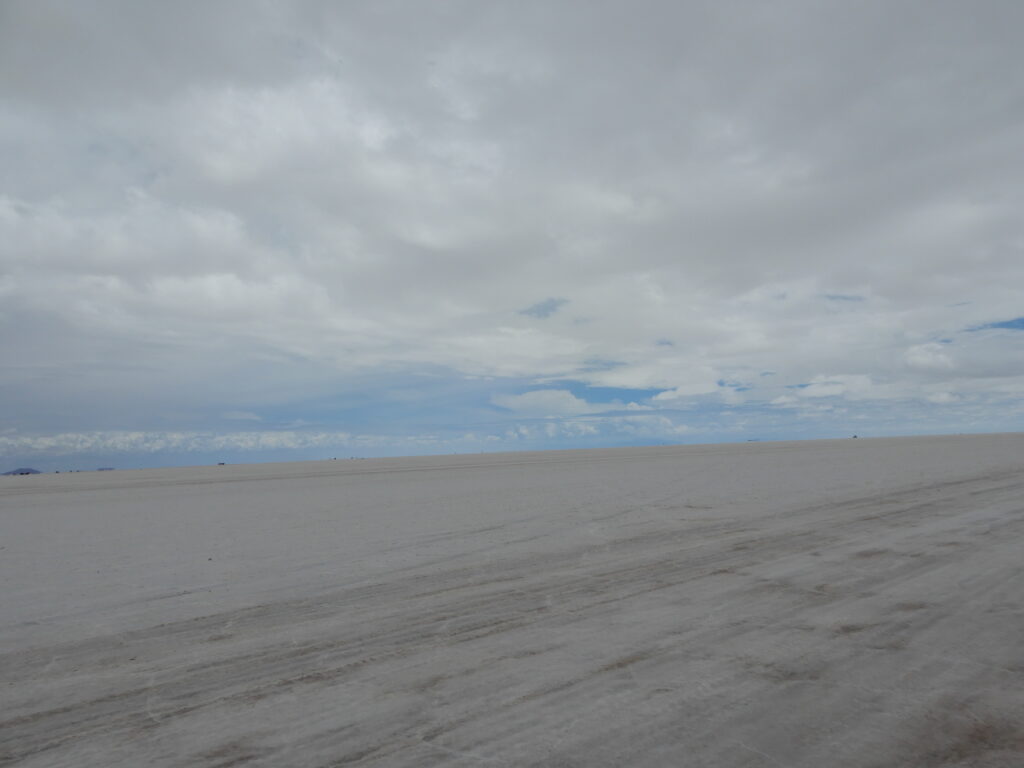
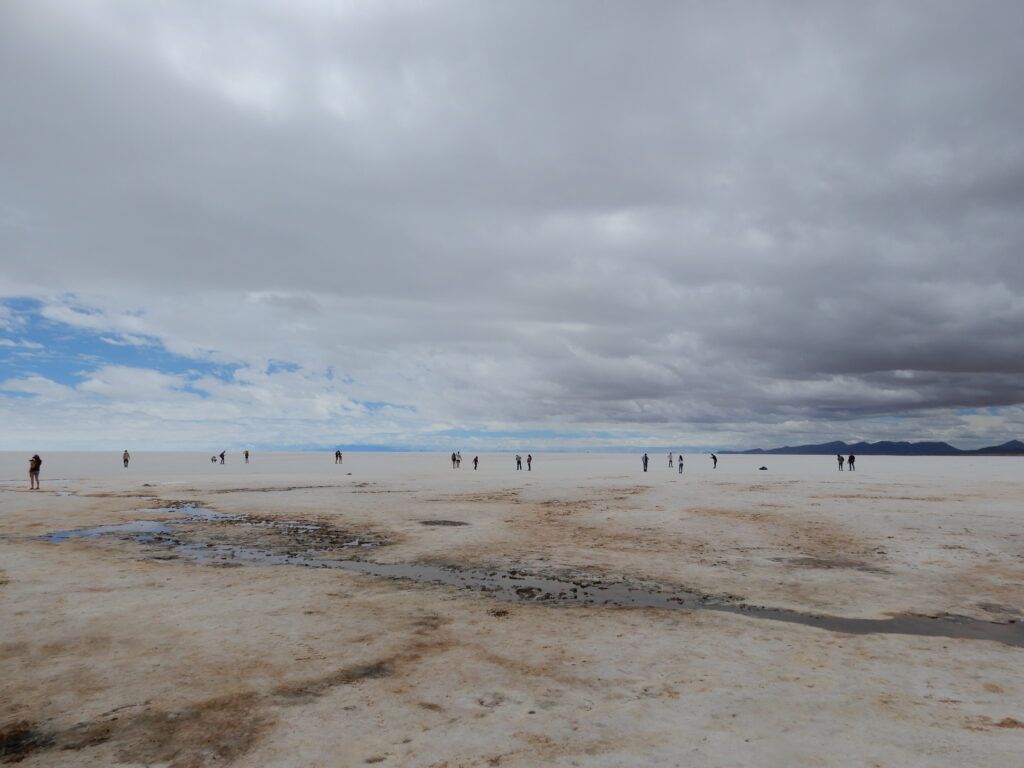
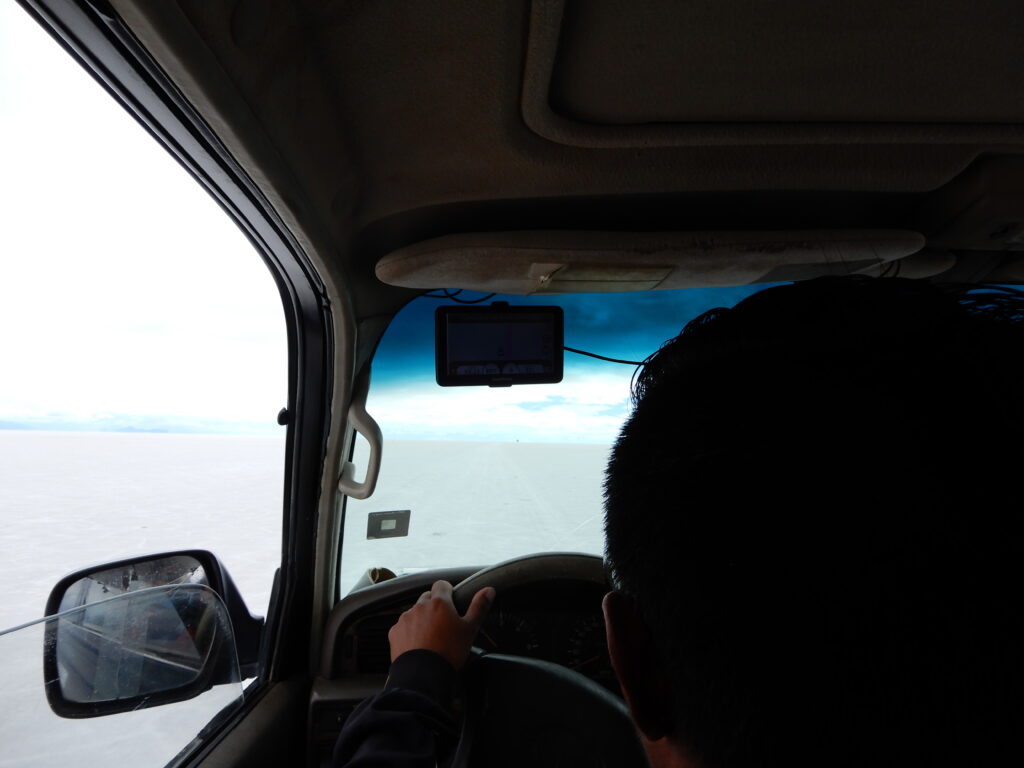
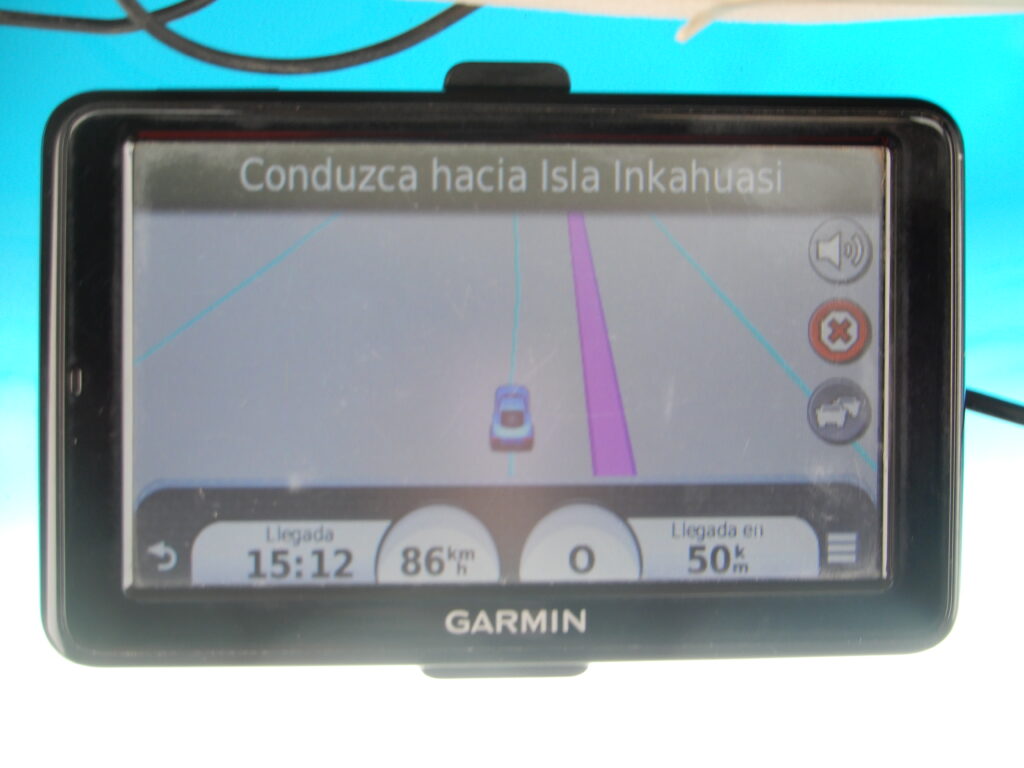
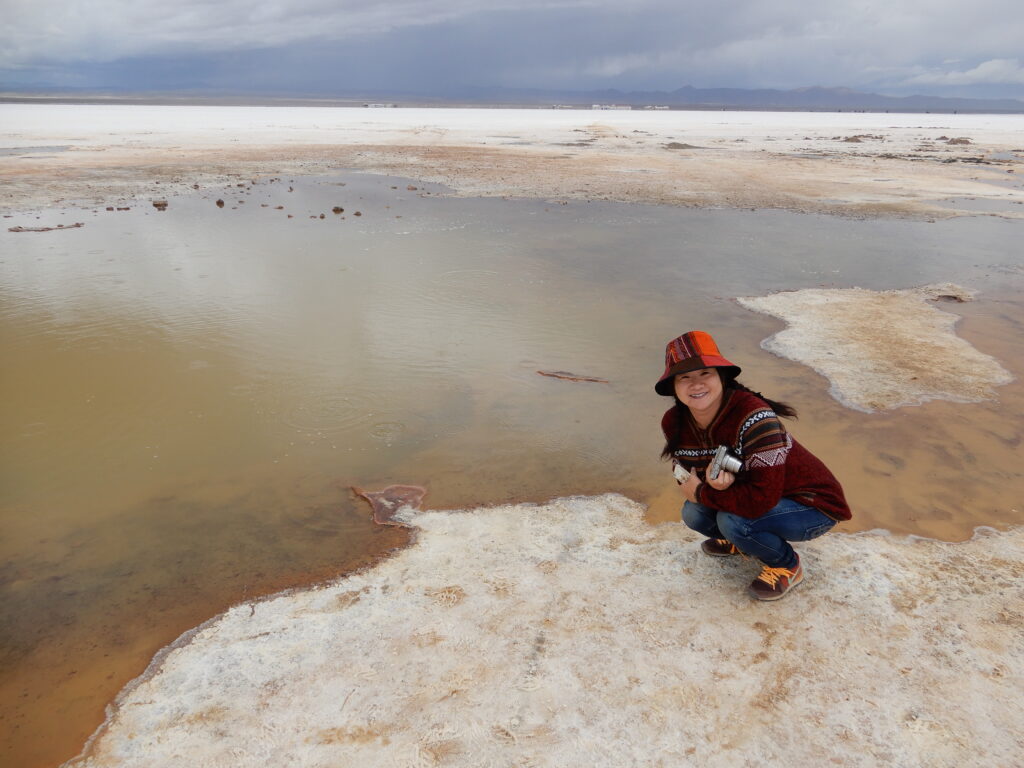
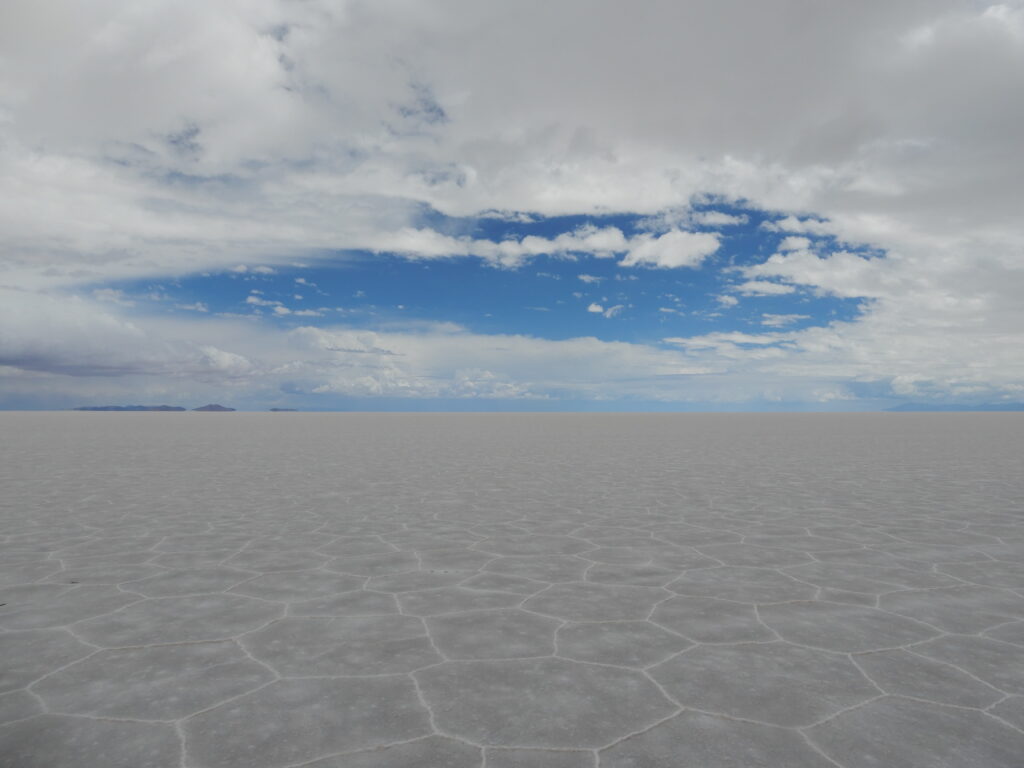
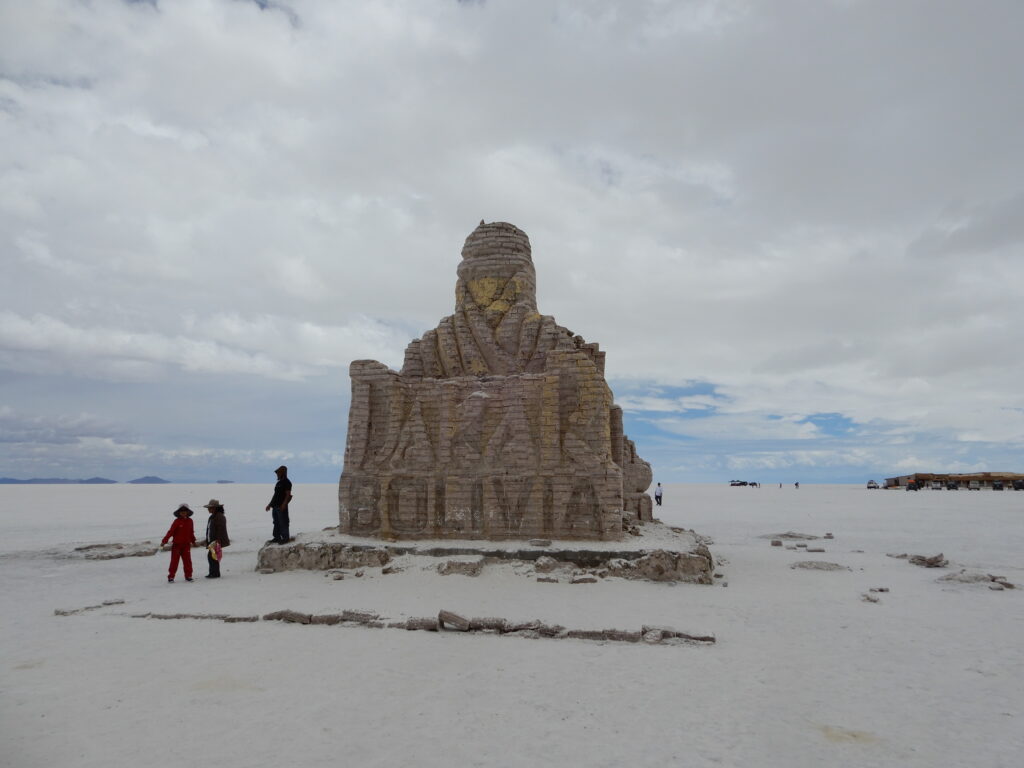
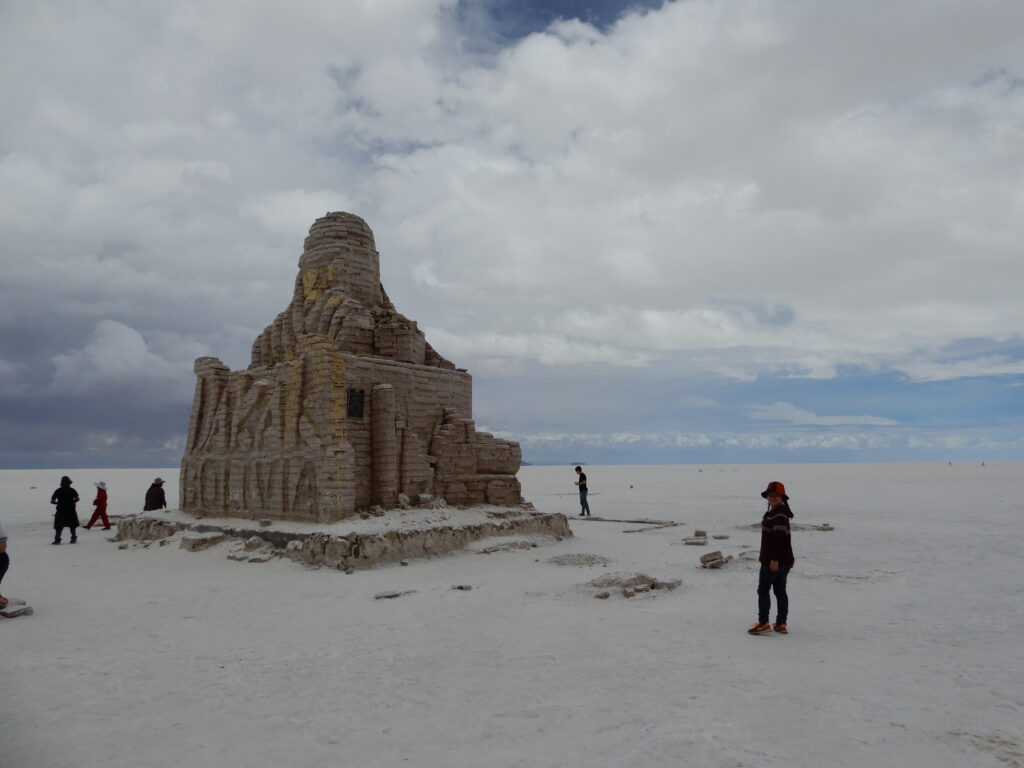
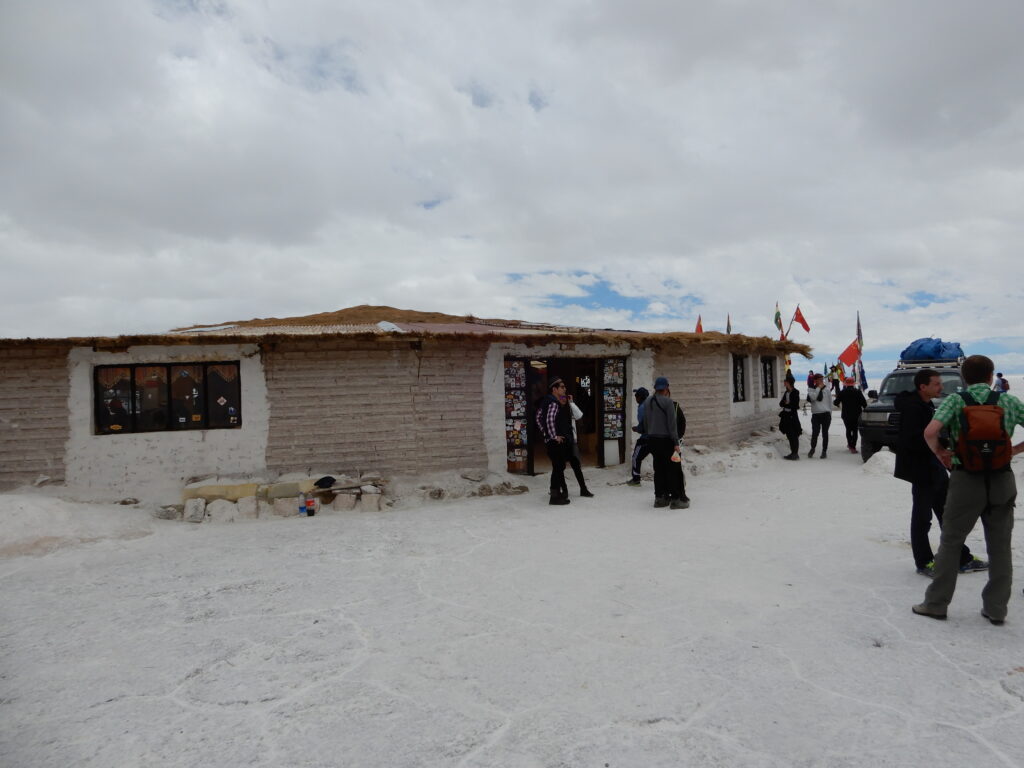
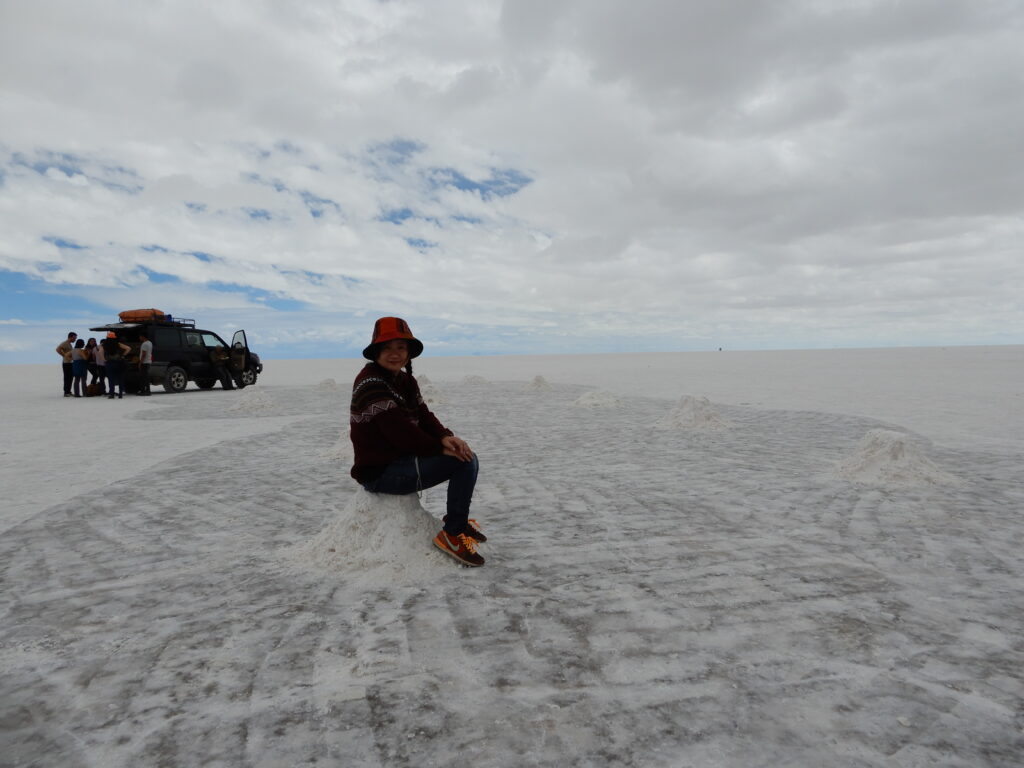
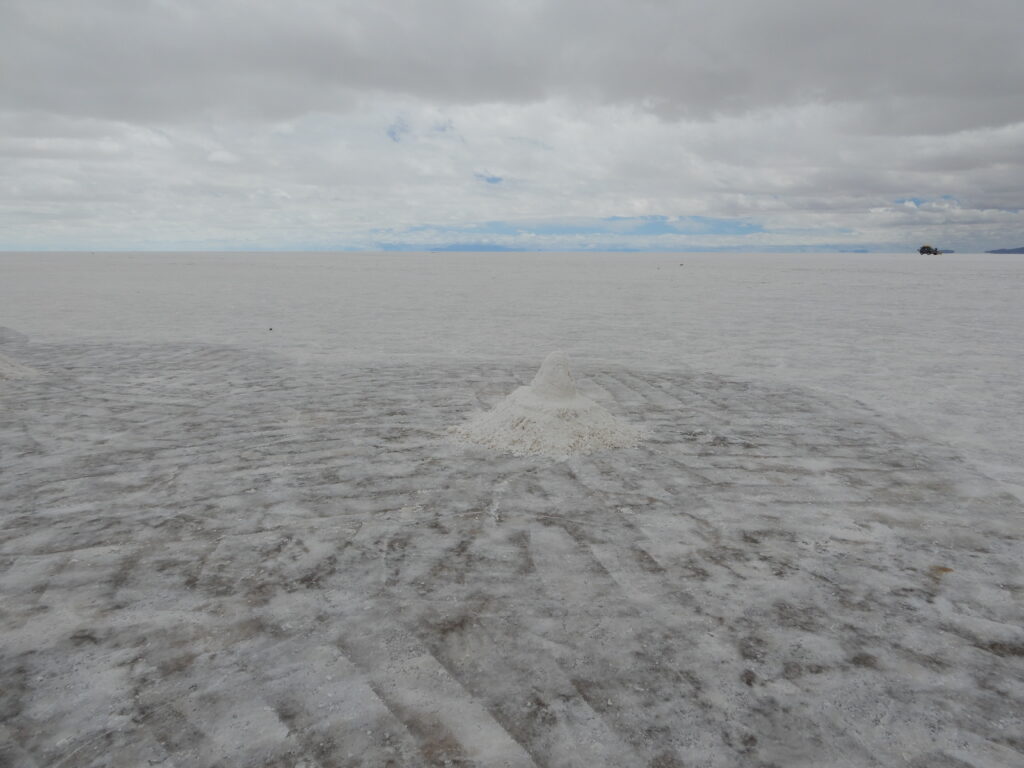
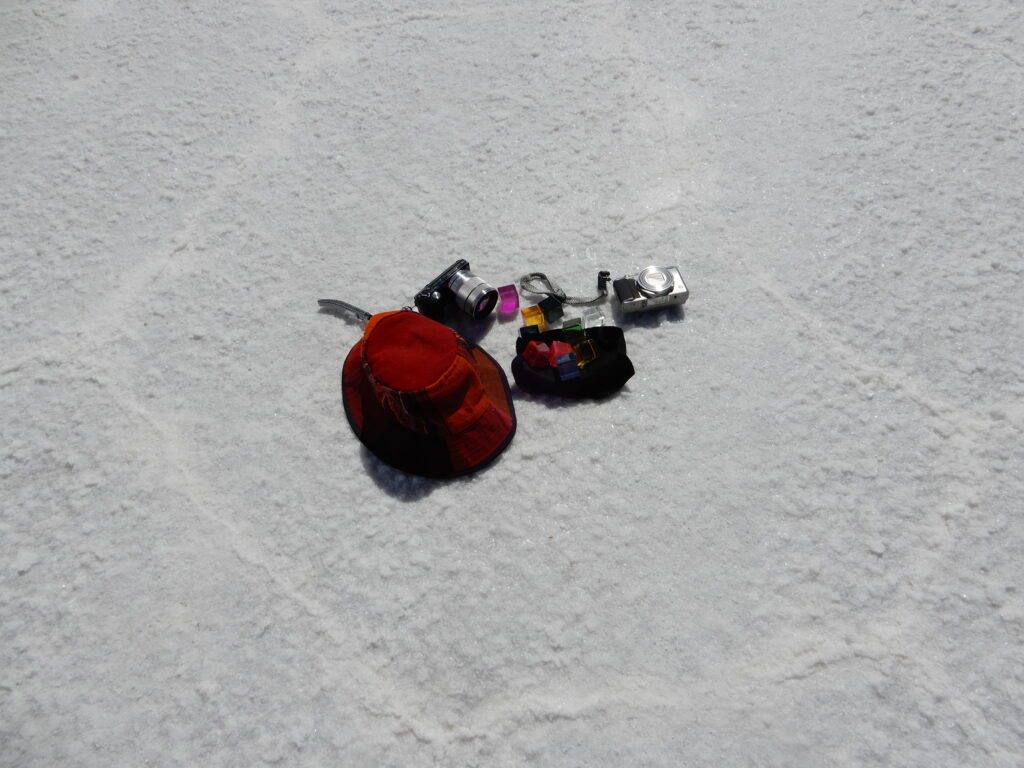
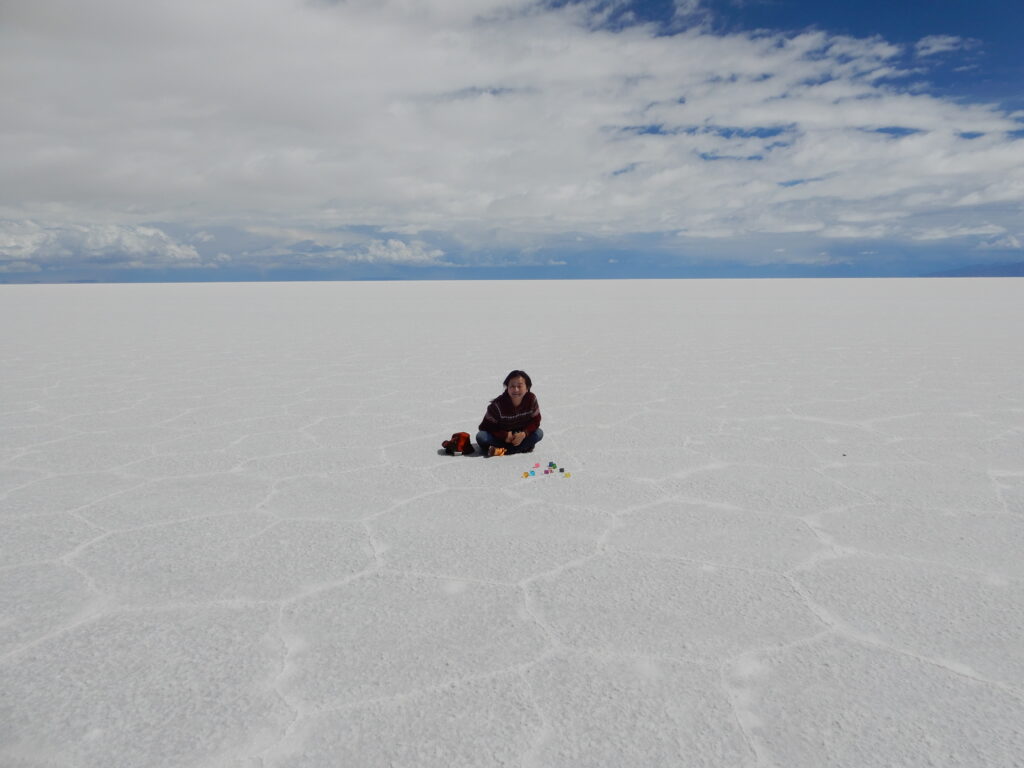

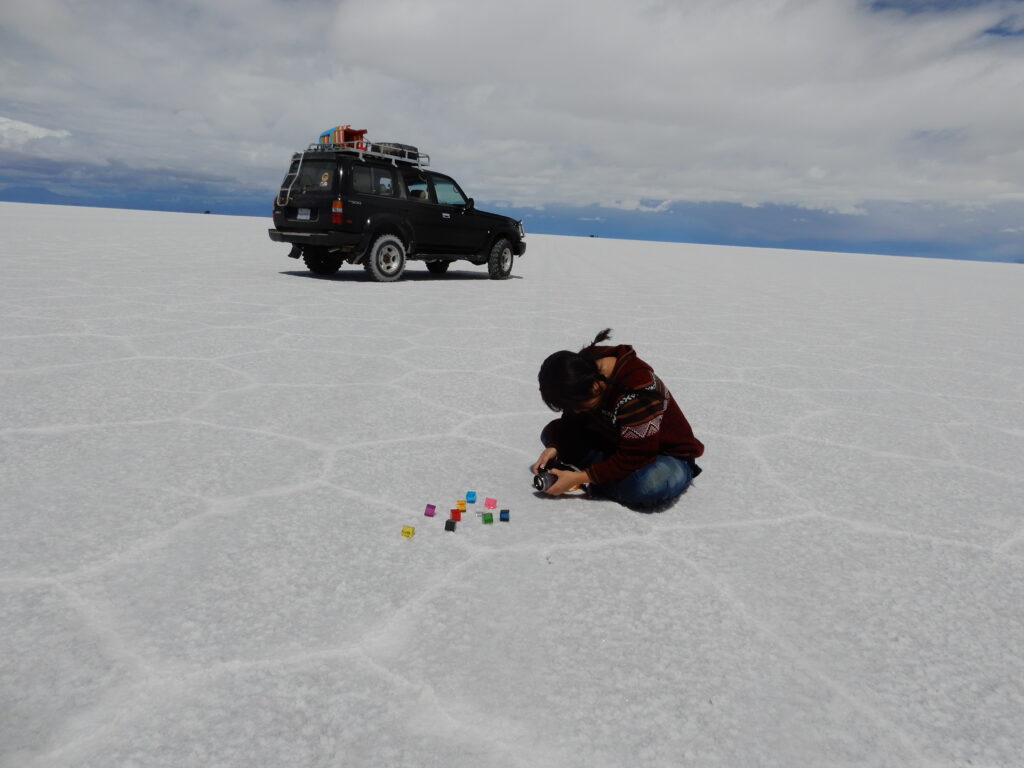


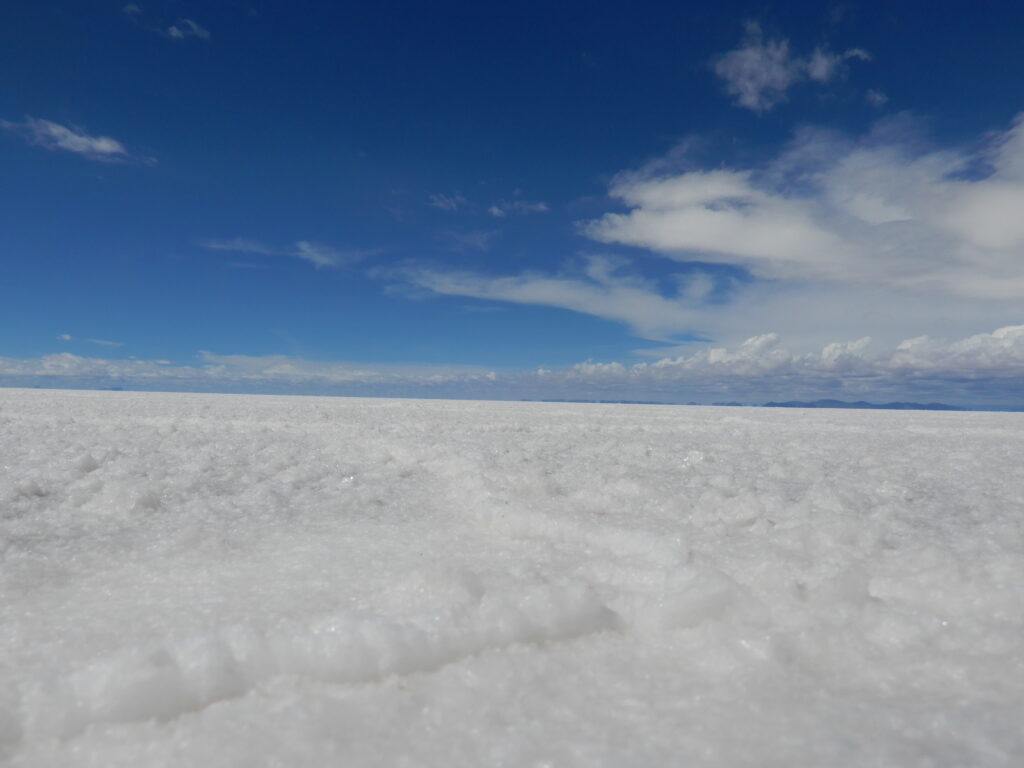
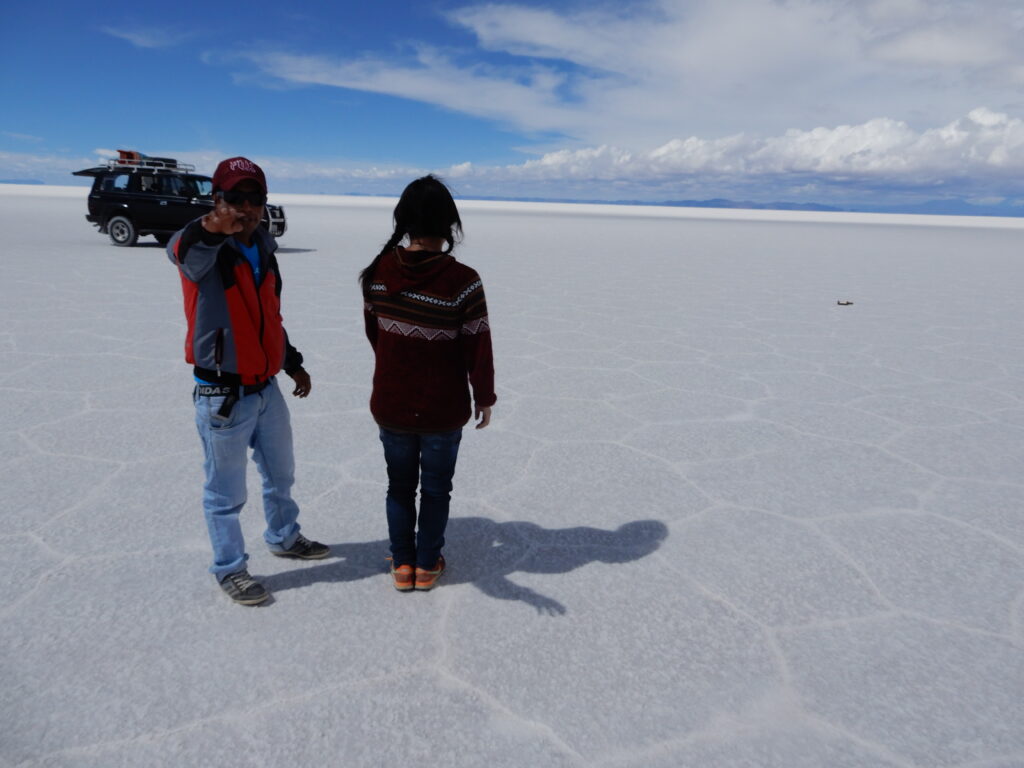

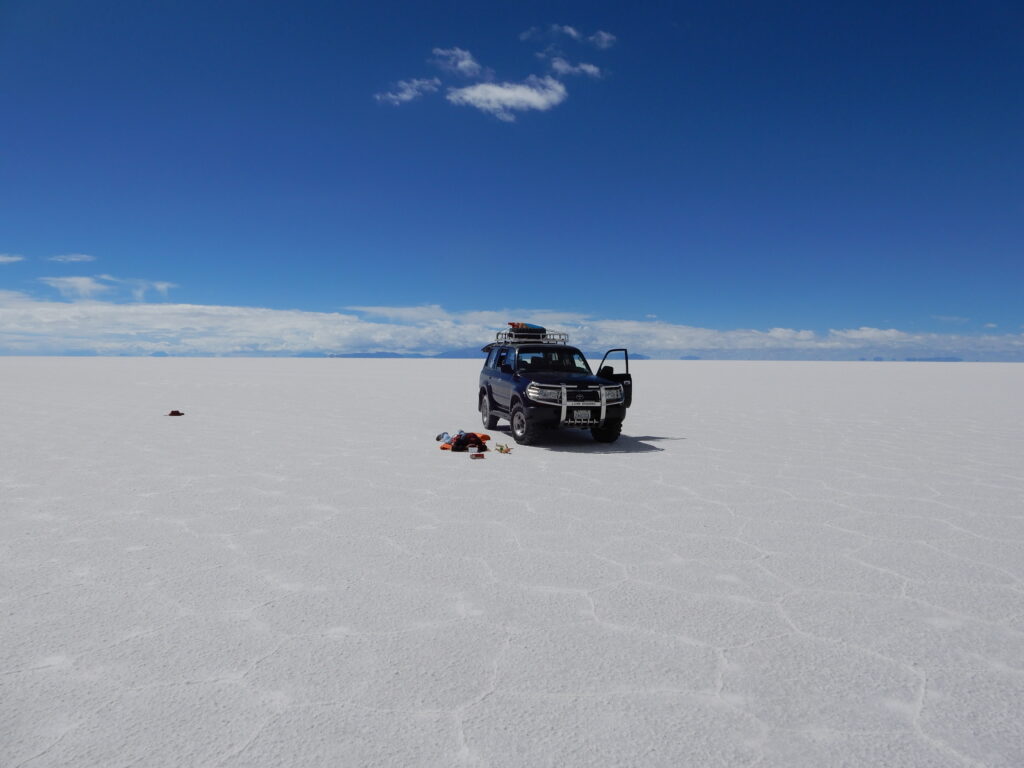
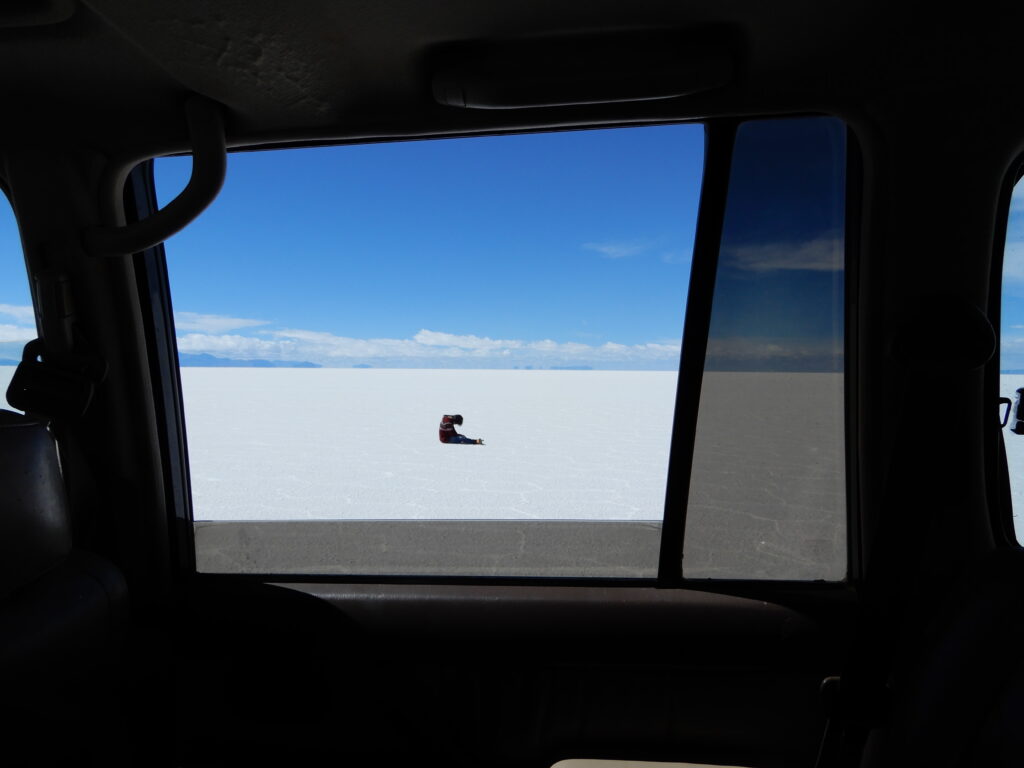
Lunch at Salar de Uyuni
There are buildings made of salt in Salar de Uyuni where you can eat and rest. Lunch was included in the tour and was prepared by the driver. I really wanted to eat a katsudon (pork cutlet bowl) while sipping hot miso soup..! The taste was just so-so.
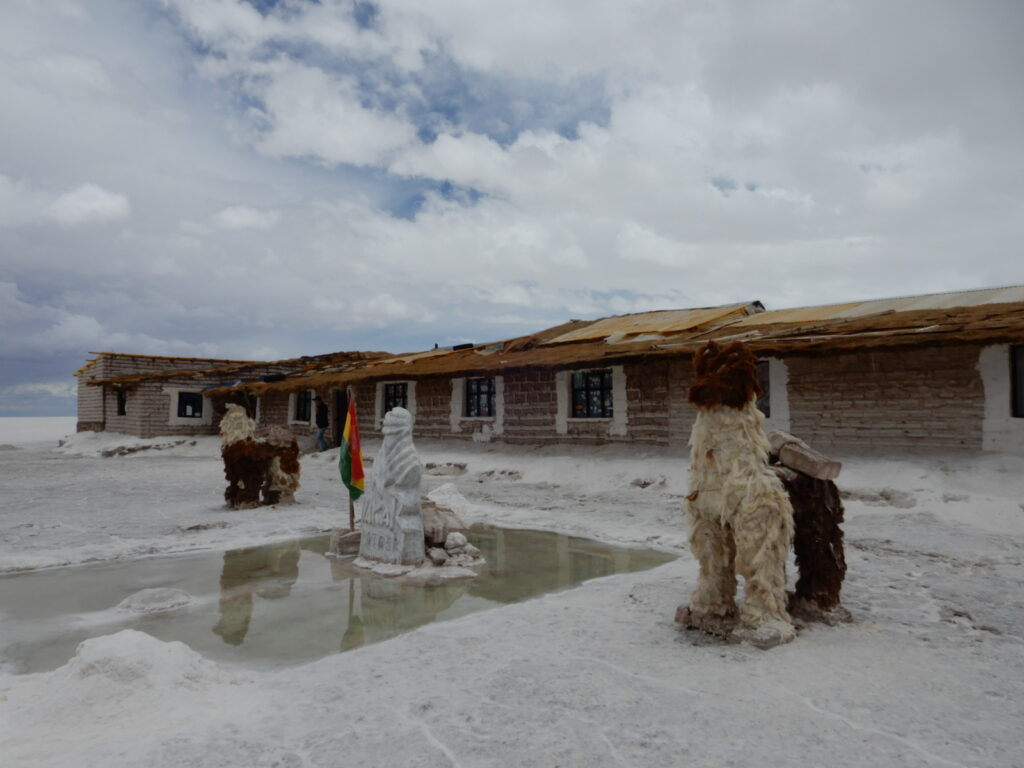
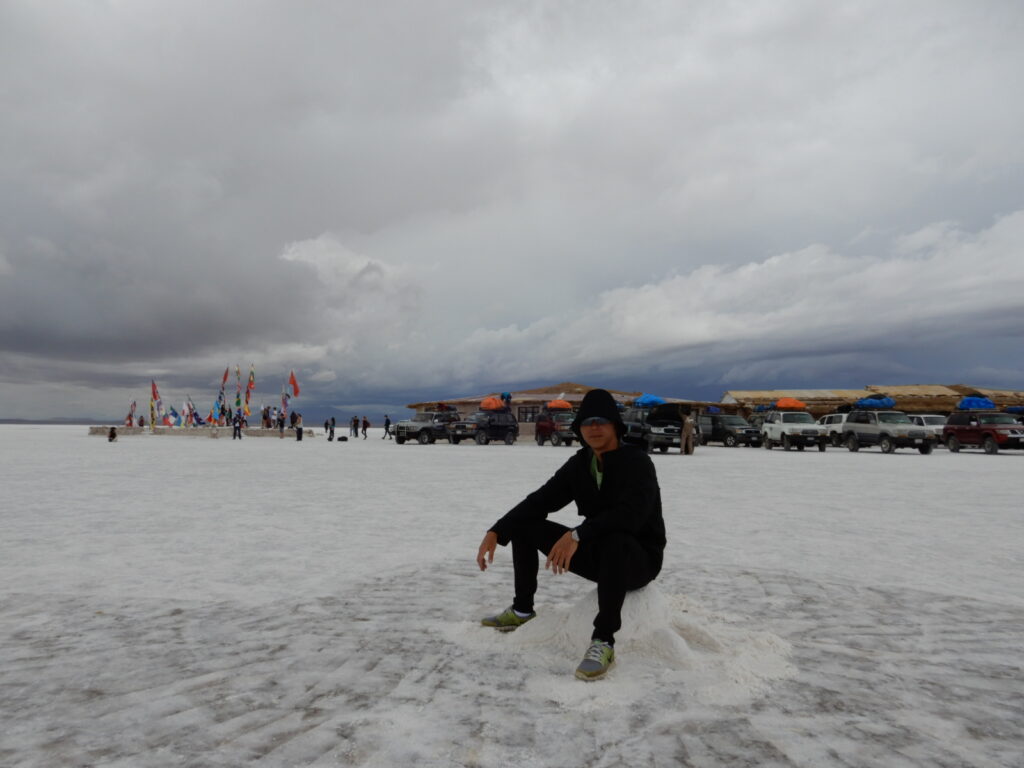
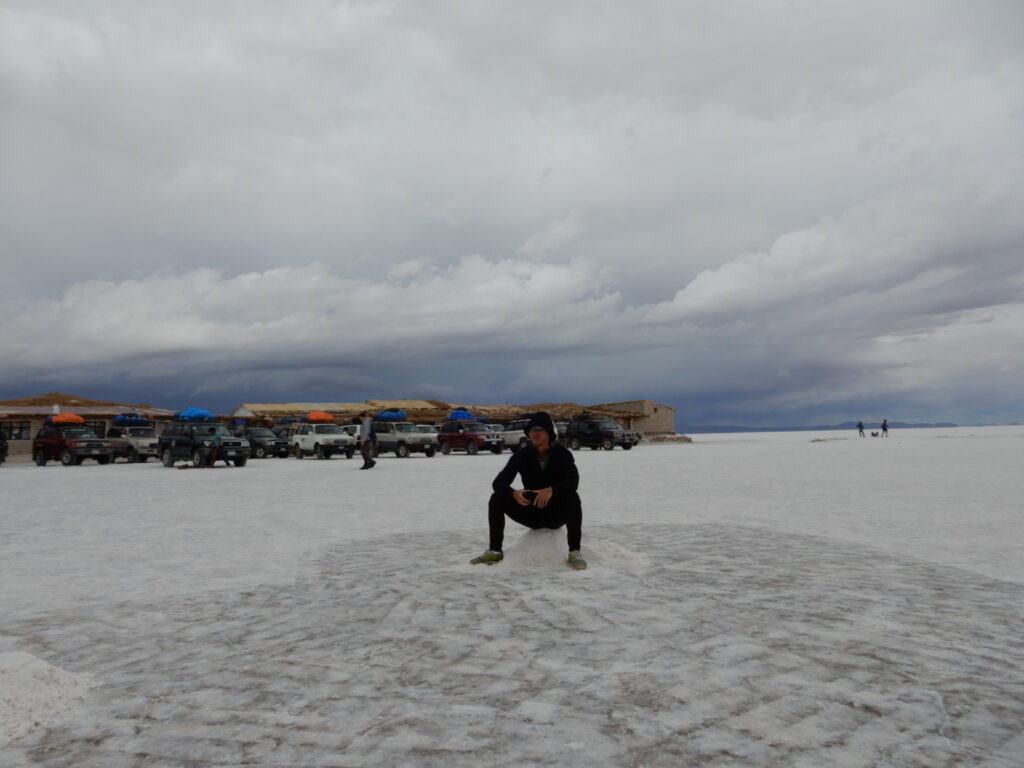
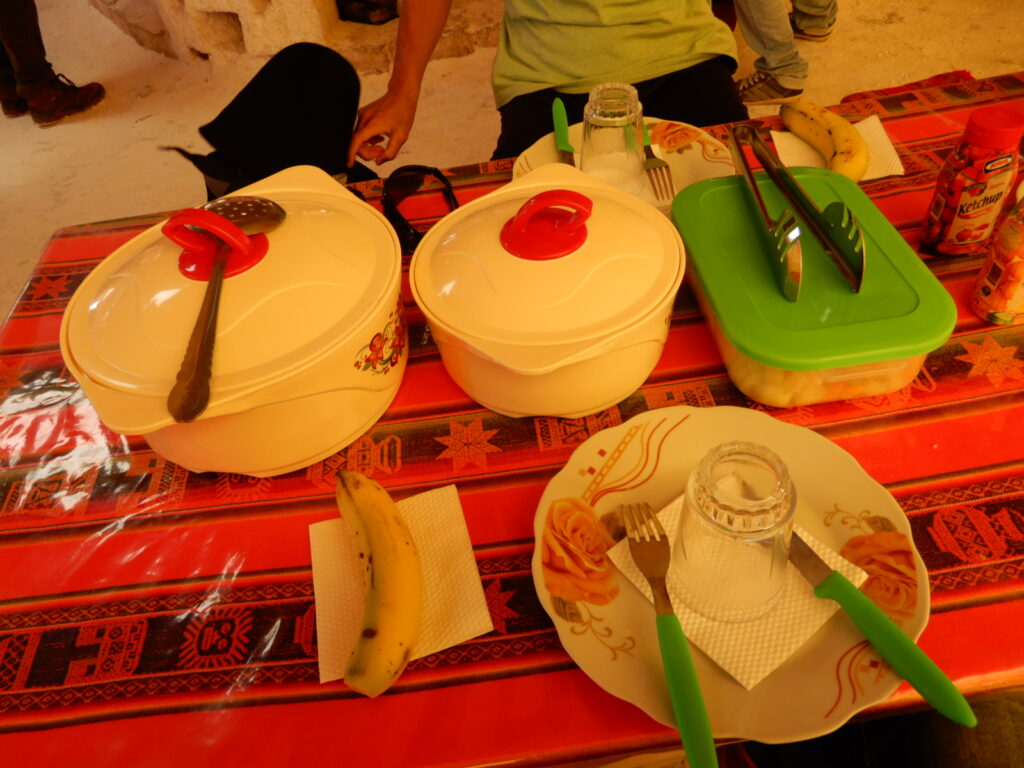

Toilet conditions in Salar de Uyuni
I told the driver that I needed to pee and he said it was OK to do it around there, so I just went with it. We thought lightly that it would be OK if we just had to pee because Salar de Uyuni is a big lake, but the situation was serious. There were a few buildings in the Salar de Uyuni where tourists could rest, but they were just salt blocks piled on top of a foundation of salt to build walls, with a light roof on top of that. And of course there is no water or sewage.
There was a toilet in the building, but it was very smelly and unhygienic. The toilets had no seats! And there was a small water tank, which was designed to be flushed with a ladle. I was curious to find out how the faeces and urine excreted here were disposed of…
I want to build a bio-toilet to protect the environment of Salar de Uyuni, the most beautiful lake in the world
The toilets in the buildings at Salar de Uyuni were about the level of public toilets in parks in the 1980s. There is no sewage system and it is collected in drums. And while it would be nice if they were disposed of properly, they are being dumped illegally.
According to the Ministry of Foreign Affairs website, “Bolivia’s economic structure is susceptible to international prices, as it relies on primary products, mainly agriculture (soya beans, sugar, etc.) and natural resources (zinc, silver, natural gas, etc.), which account for about 80% of its total exports. The report states.
Bolivia is a poor country with poor infrastructure. Yet, when tourists from all over the world come to Salar de Uyuni, it is only natural that problems related to public welfare, such as sanitation and security, become more serious. The maintenance of public welfare is the job of the state, but we, the tourists, are also responsible for this.
Tourists have paid money to come here to enjoy themselves, so they have the right to enjoy themselves. However, rights and duties are a set, and this duty is morality itself. In legal terms, the difference between law and morality is “whether or not it is enforceable by state power”. Even if there is a law against the abandonment and dumping of rubbish and filth, without morality such problems cannot be solved.
Not only in Machu Picchu, but everywhere in the world there was a huge amount of rubbish being dumped, so travelling the world was not only fun, but also a good opportunity to think about environmental issues. And the next step is to take action. One of those actions is to educate people through a world travel blog like this, which is why I wrote it here.
When I went to New York, I was surprised by the amount of rubbish in the city. Everything at the level of the roadway and pavements is rubbish. When I was taking a walk downtown in the morning, they were pushing that rubbish away with a water spray the size of a fire truck, collecting it in one place and putting it on a rubbish truck. It was wild and I laughed, but it was no laughing matter.
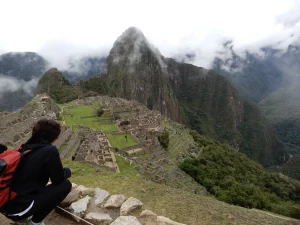
When the sun goes down, the scenery is different
The landscape of Salar de Uyuni changes in an instant. It is so beautiful that your eyes and brain cannot catch up with the moment. It is truly enchanting…
